Iowa jewel box bank 1
September 2, 2025 at 10:10 PM by Dr. Drang
With the Labor Day weekend behind me, I drove from Minnesota down into Algona, Iowa, to see the first of three Louis Sullivan jewel box banks in the Hawkeye State.
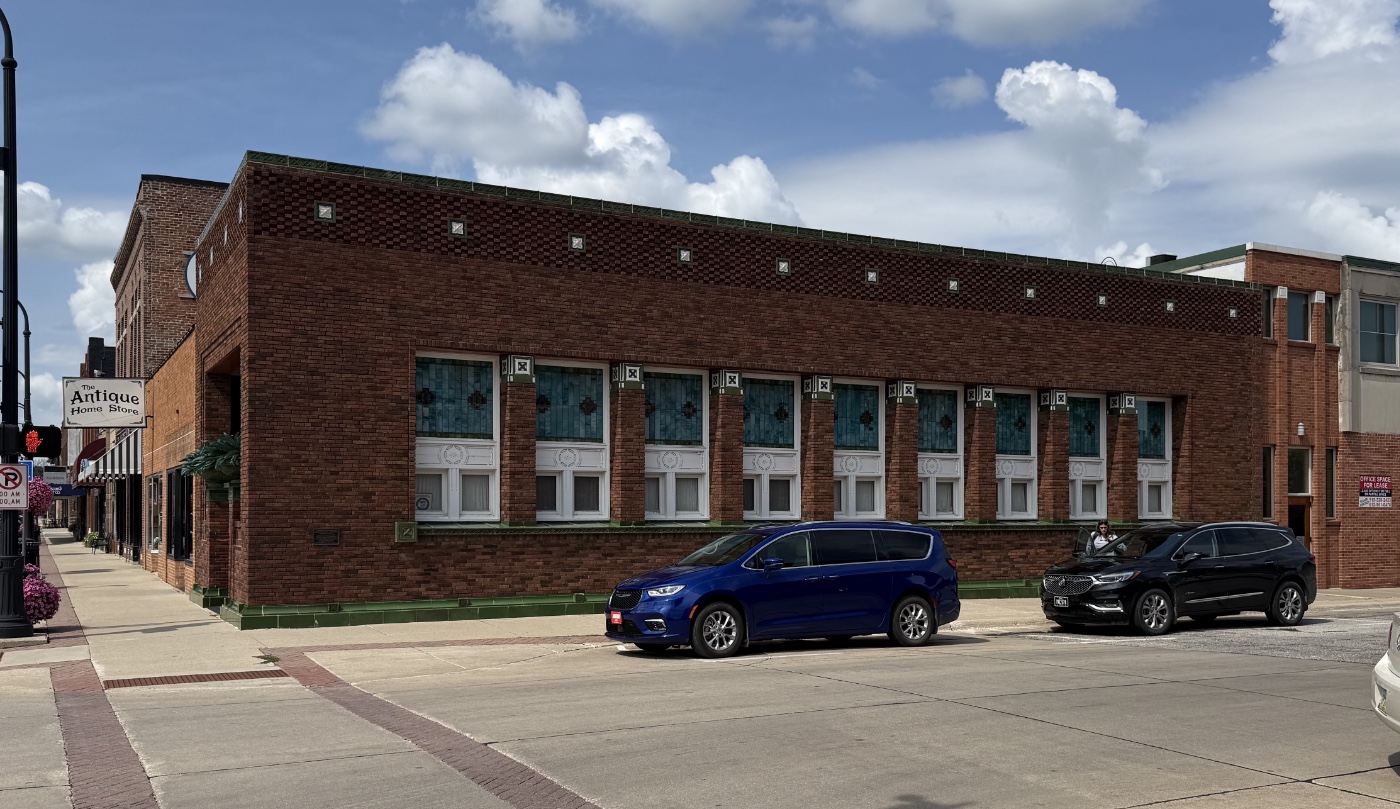
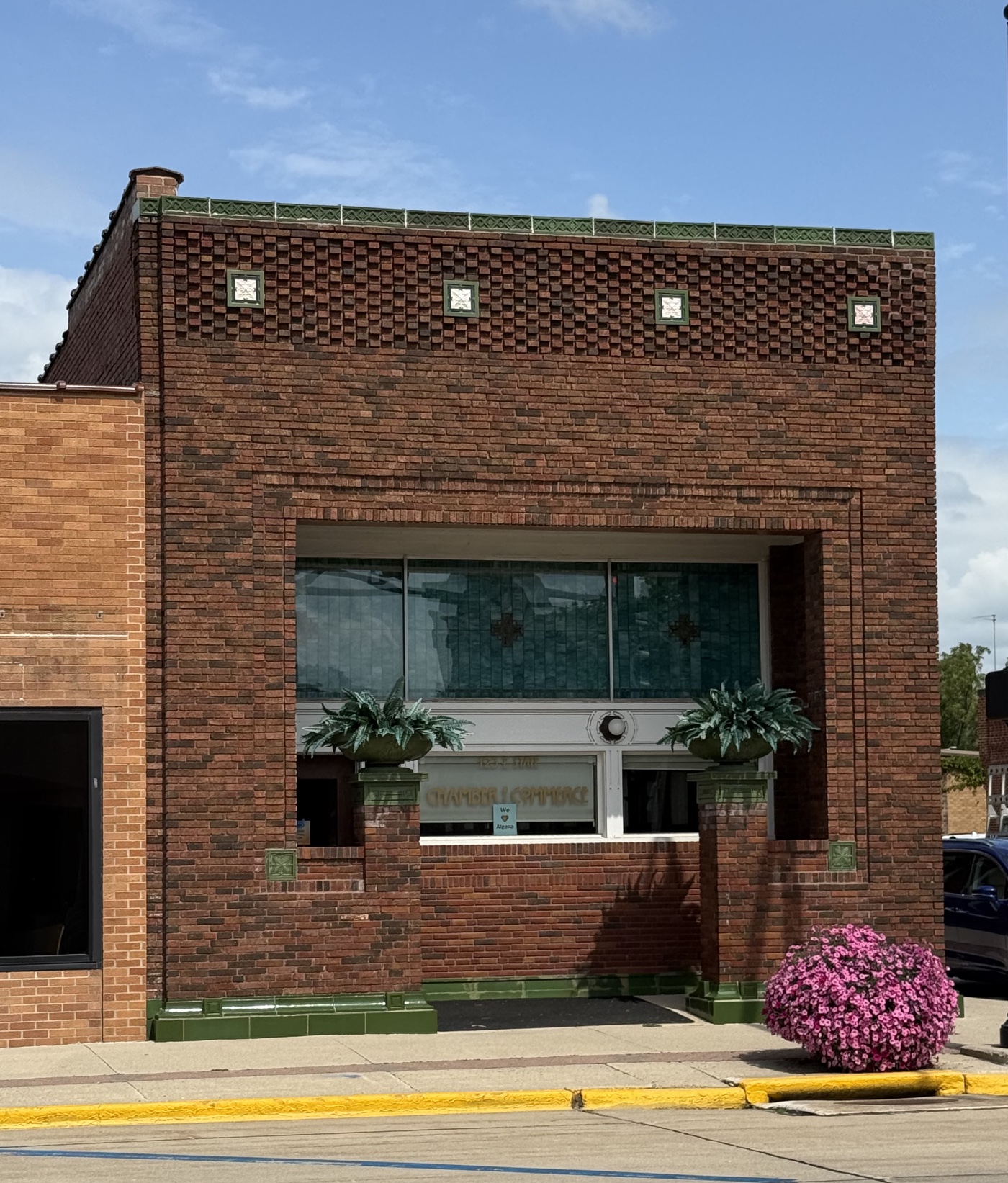
Strictly speaking, this isn’t—and never was—a bank. Wikipedia calls it the Henry Adams Building, and the plaque on the side calls it the Algona Land and Loan Office.
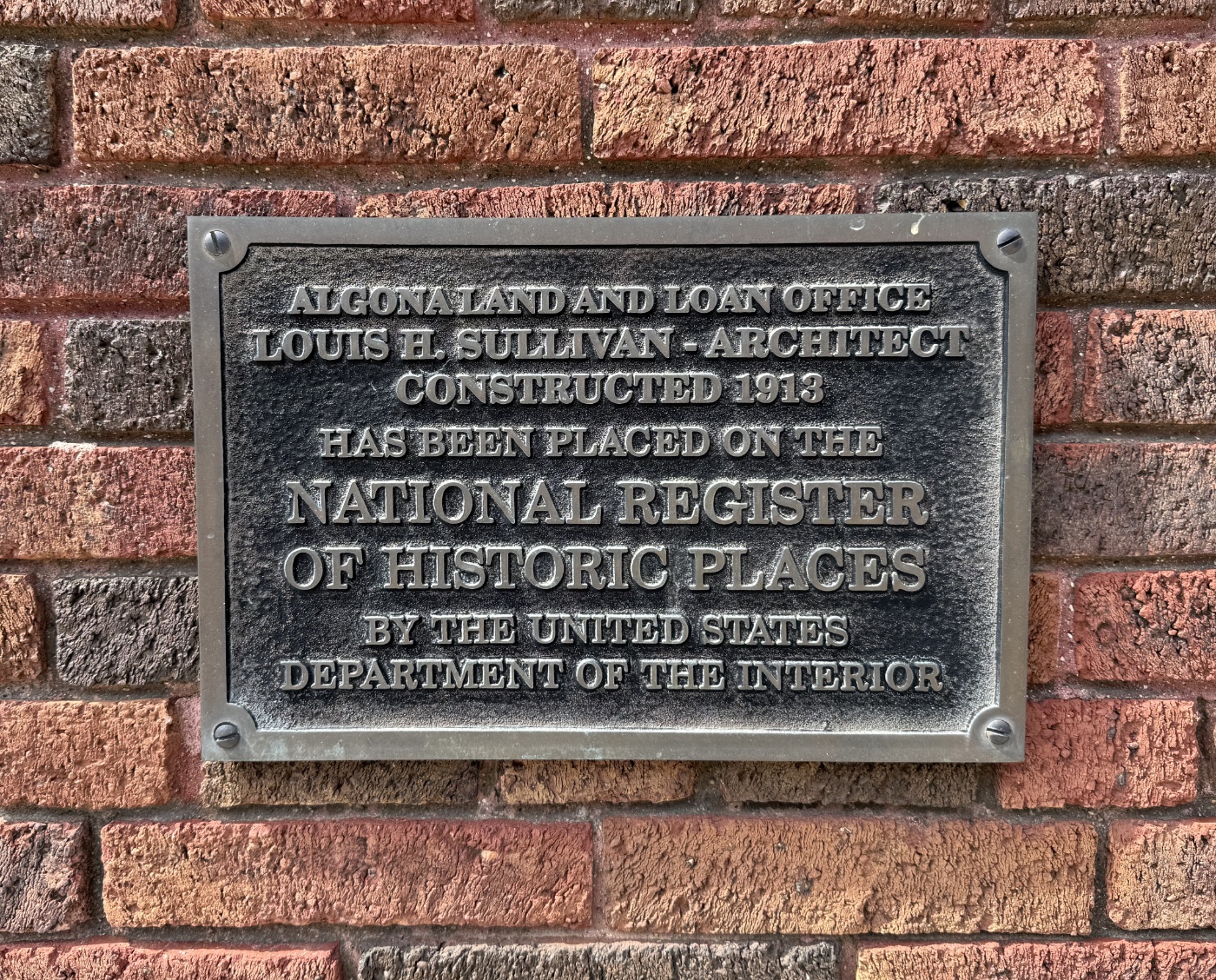
For much of its life, it was the home of the Druggists Mutual Insurance Company. It now contains the offices of the Algona Chamber of Commerce.
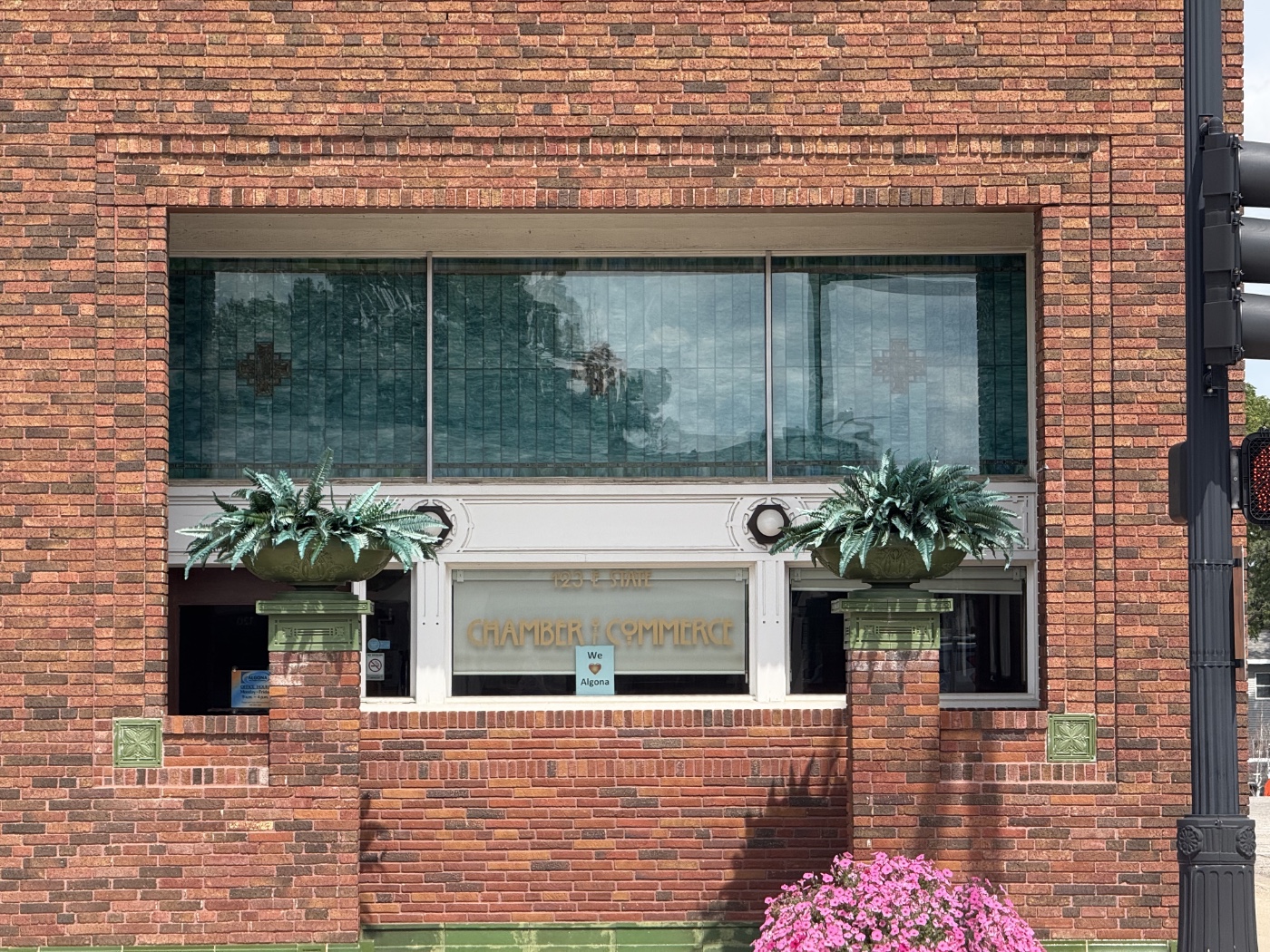
The pedestals with the pots are part of an entranceway that sits forward of the true front wall of the building. The terracotta squares at the two bottom corners are nicely detailed.
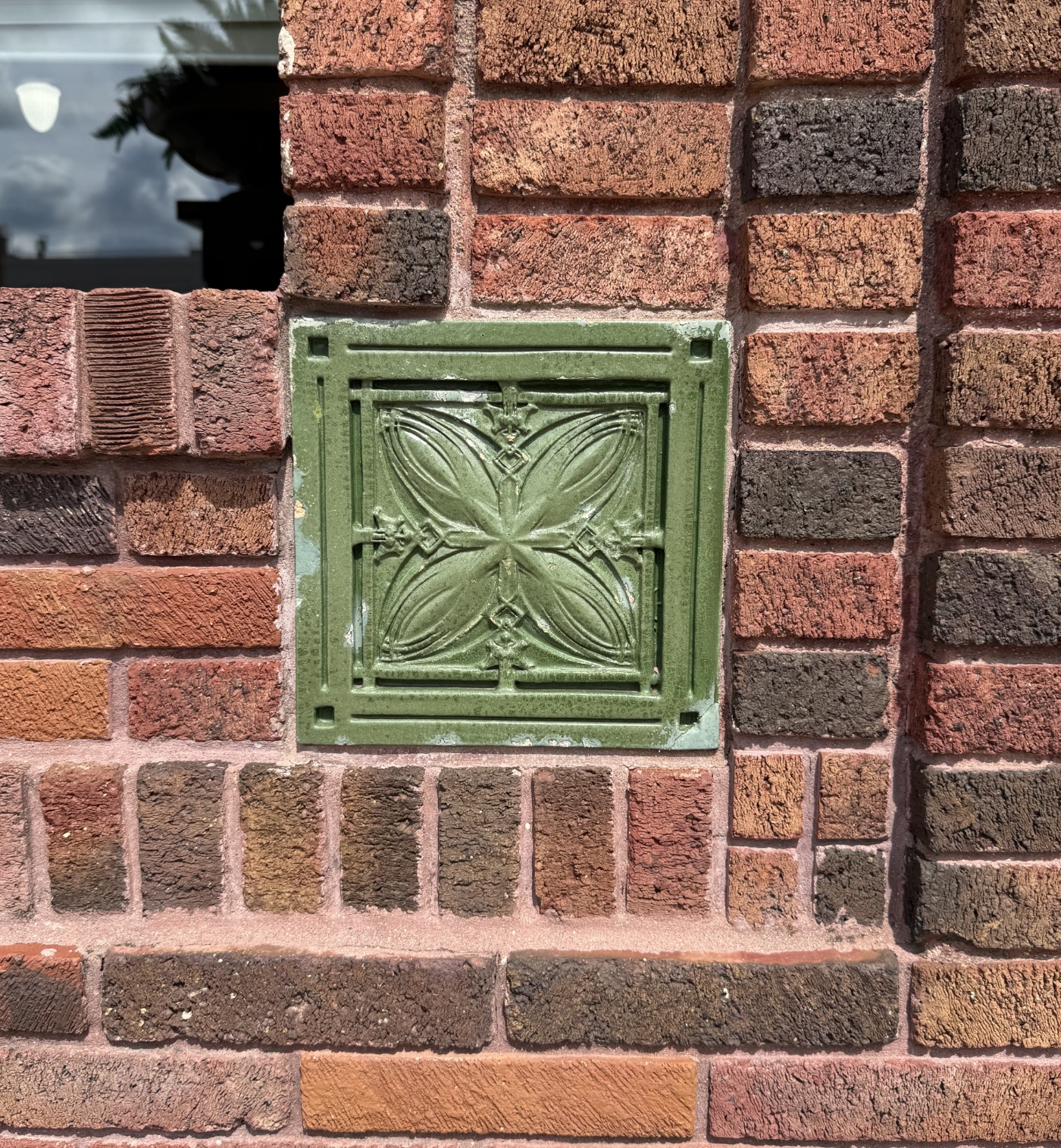
The windows on the long side of the building are decorated in a more geometric, less organic way.
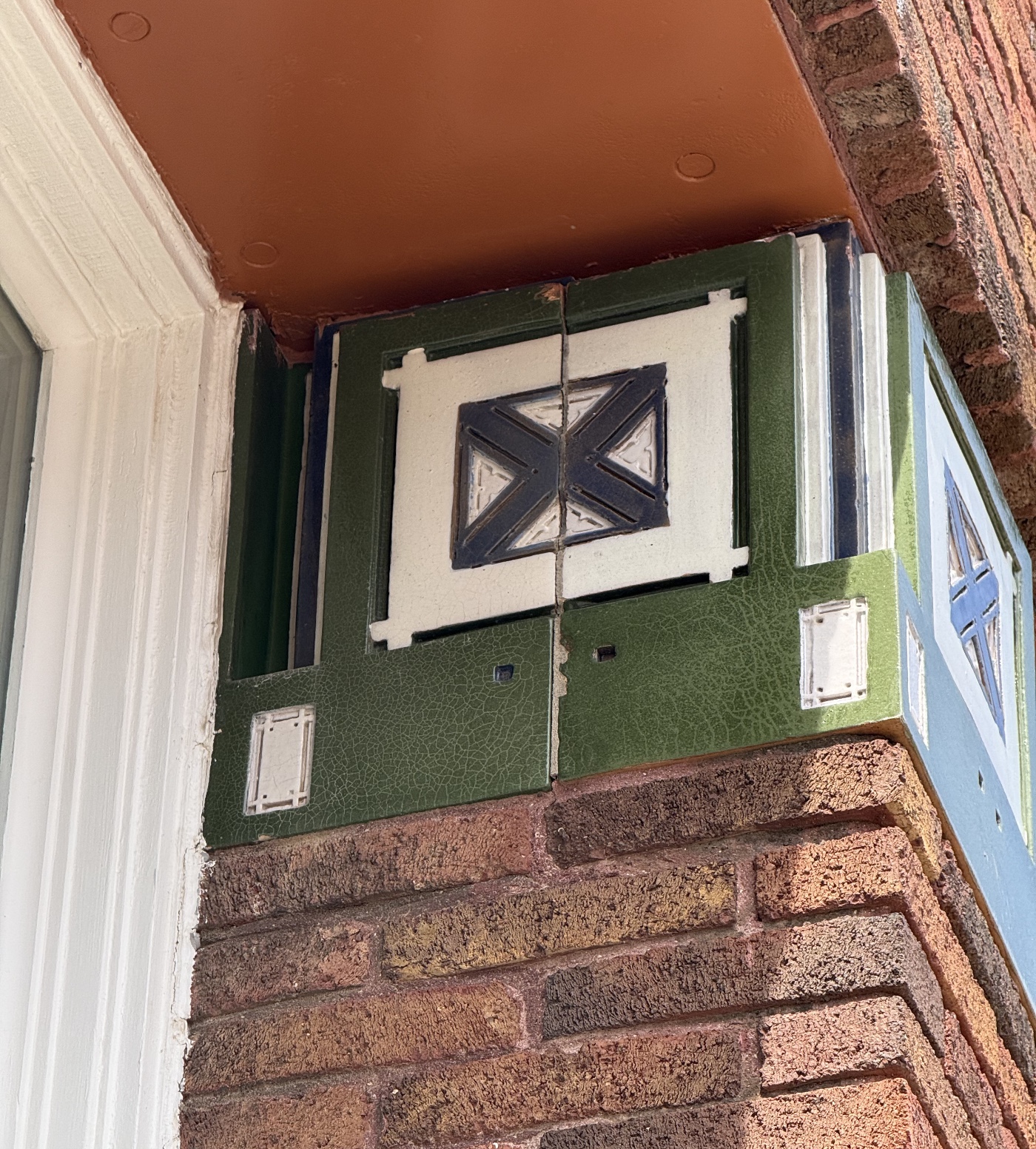
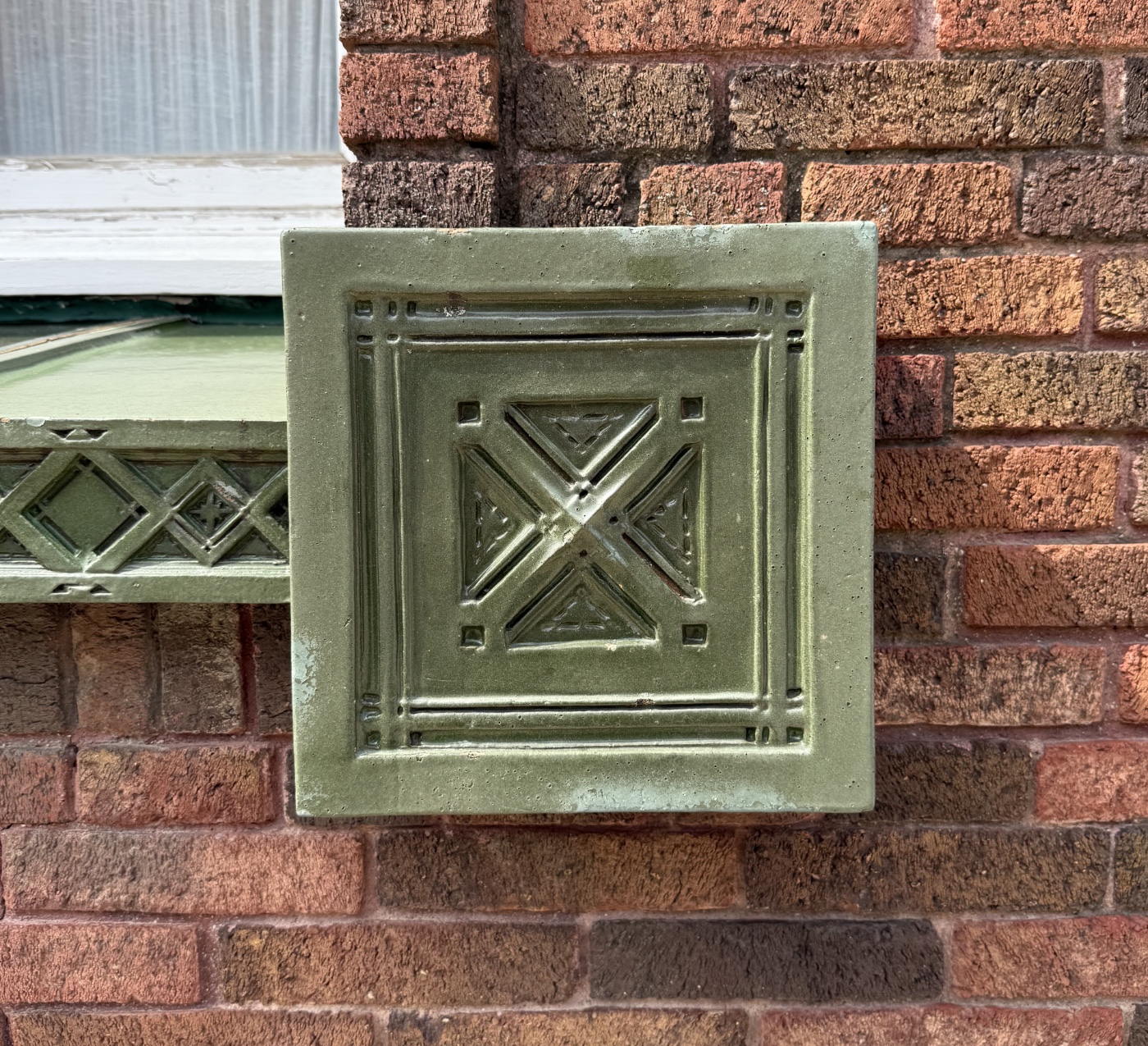

A feature I especially liked is the decorative strip along the bottom of the wall.
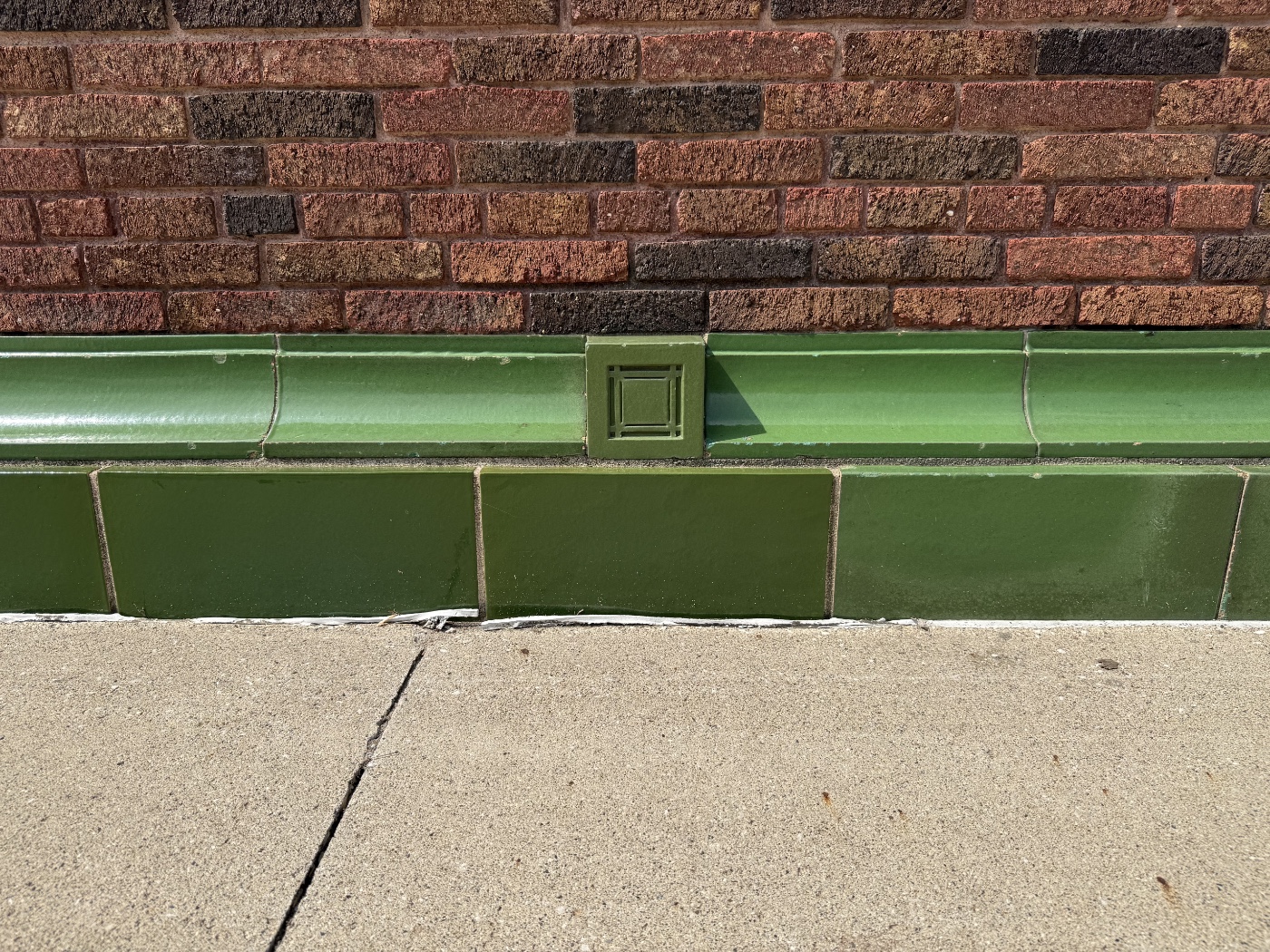
According to the nice young woman working in the Chamber of Commerce office, virtually nothing of the interior—except maybe the tile floor, most of which is covered by carpeting—is original or even a restoration of the original, so I won’t show much of it. The front stained glass windows may be original,
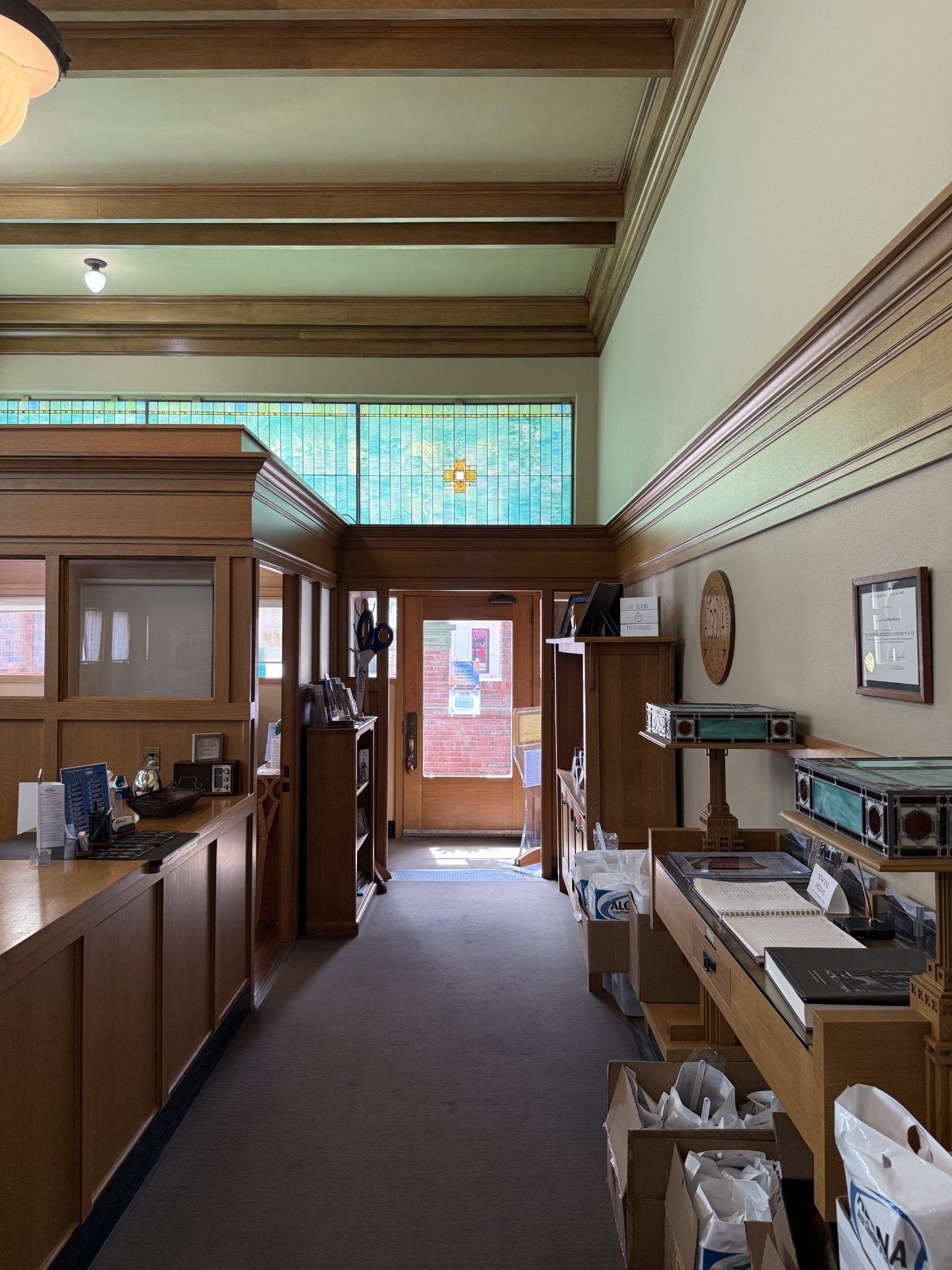
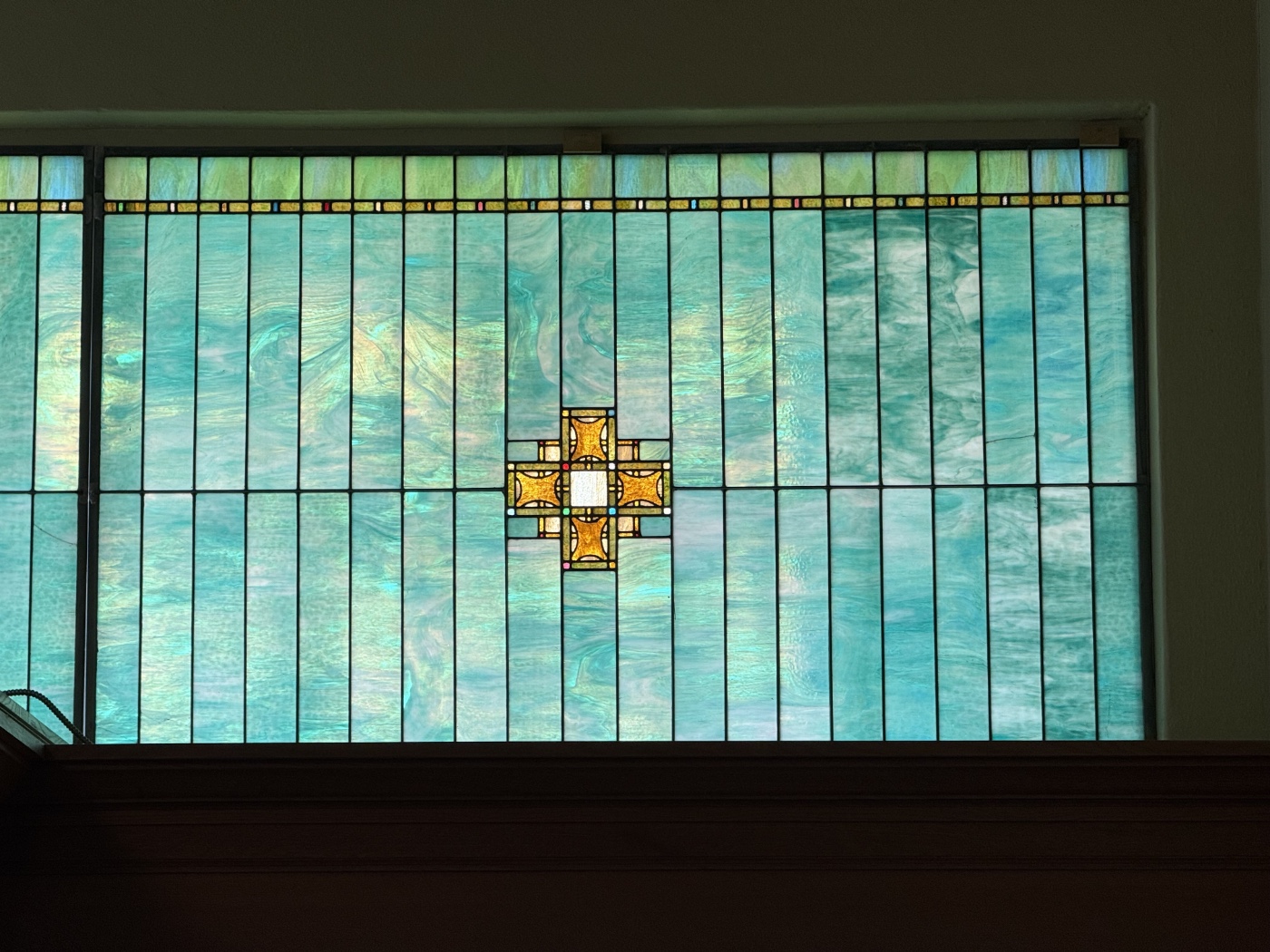
and the stained glass windows along the side are apparently modeled on the originals.
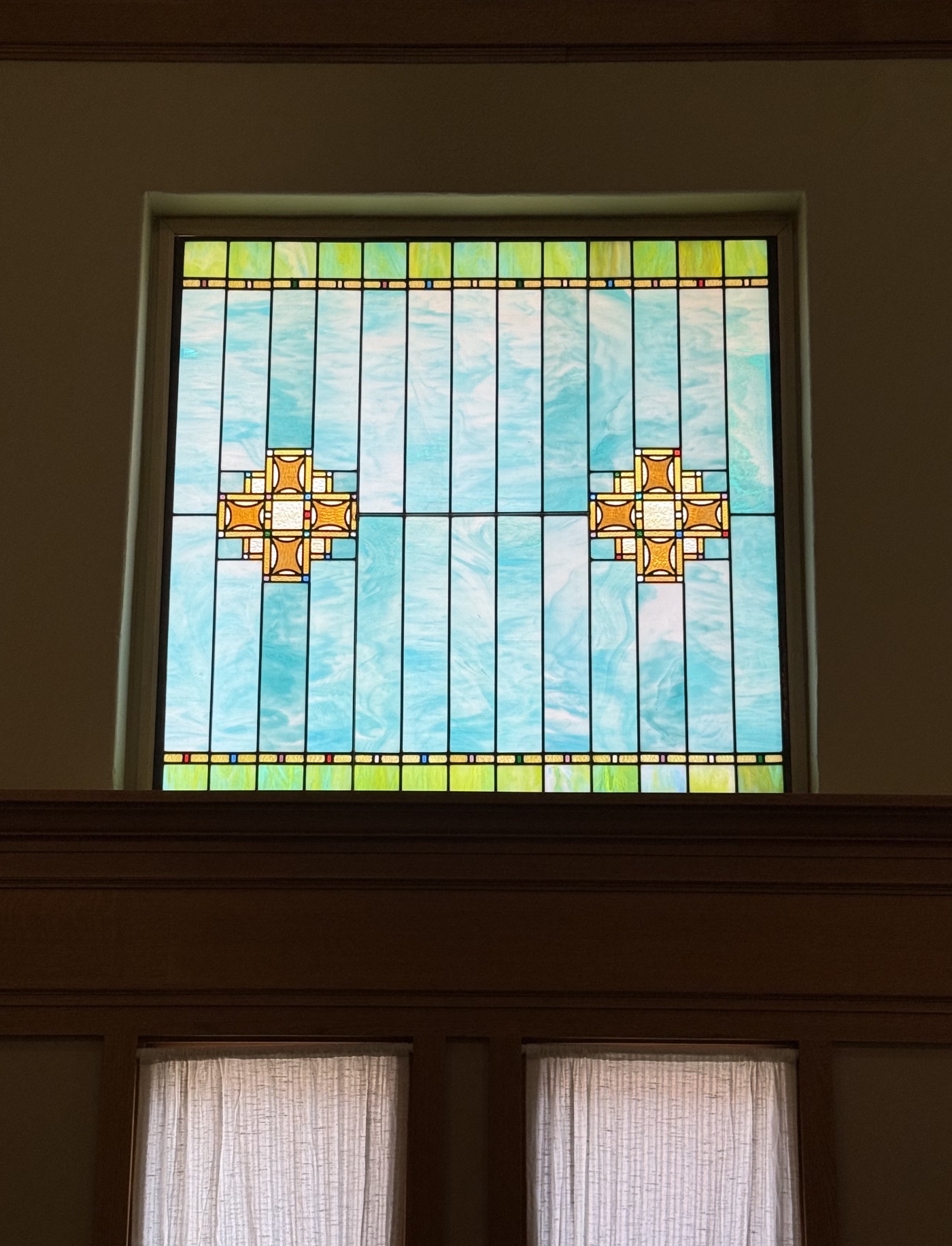
This building is certainly a step below the palaces I saw in Columbus and Owatonna, but it still has some nice details. If a set of drawings exist somewhere, I’d like to see them to get a sense of what Sullivan intended for the interior.
Minnesota jewel box bank
August 28, 2025 at 10:02 PM by Dr. Drang
Today’s Louis Sullivan jewel box bank is the National Farmers’ Bank in Owatonna, Minnesota. I stopped here on the way up to the Twin Cities, where I’ll be visiting my daughter and going to the Minnesota State Fair.
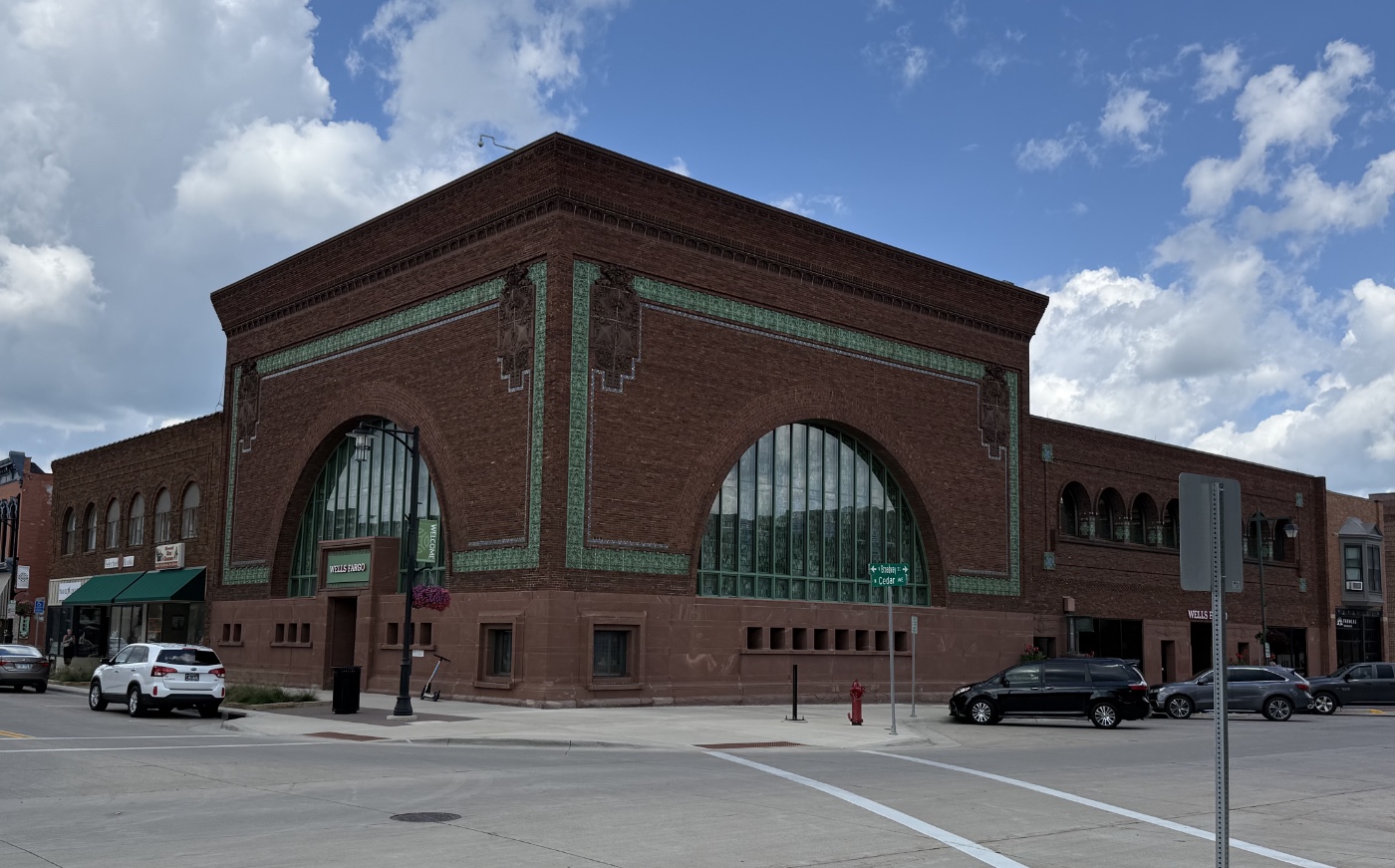
This bank was designed and built about a decade before the one I saw yesterday in Columbus, Wisconsin. That one was the last jewel box Sullivan designed; this is the first one. The park across the street from the bank has sign with a brief history of the building.
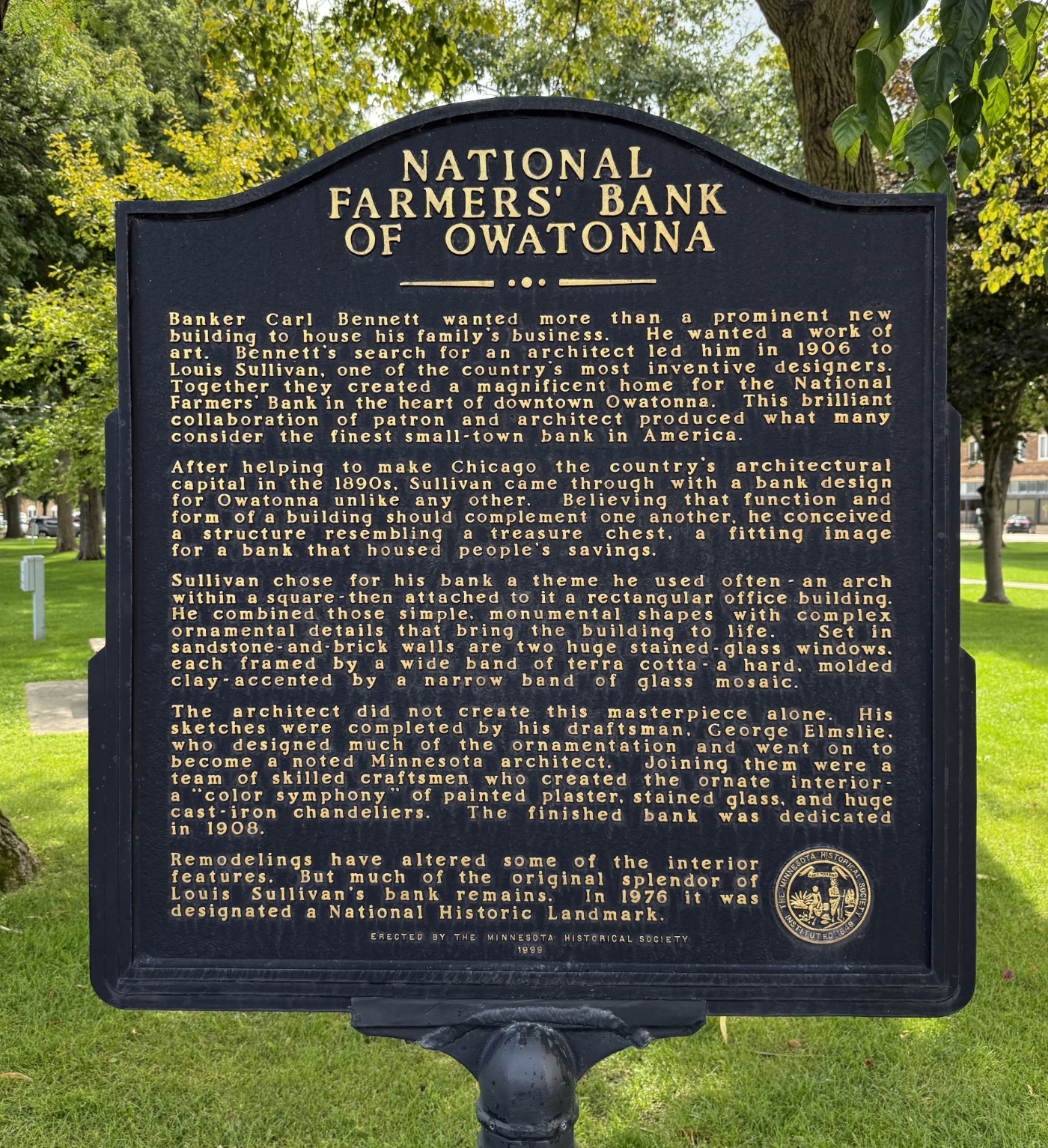
The semicircular stained glass windows are similar to what we saw in Columbus, Wisconsin, but here there are two large windows on adjacent sides of the building.
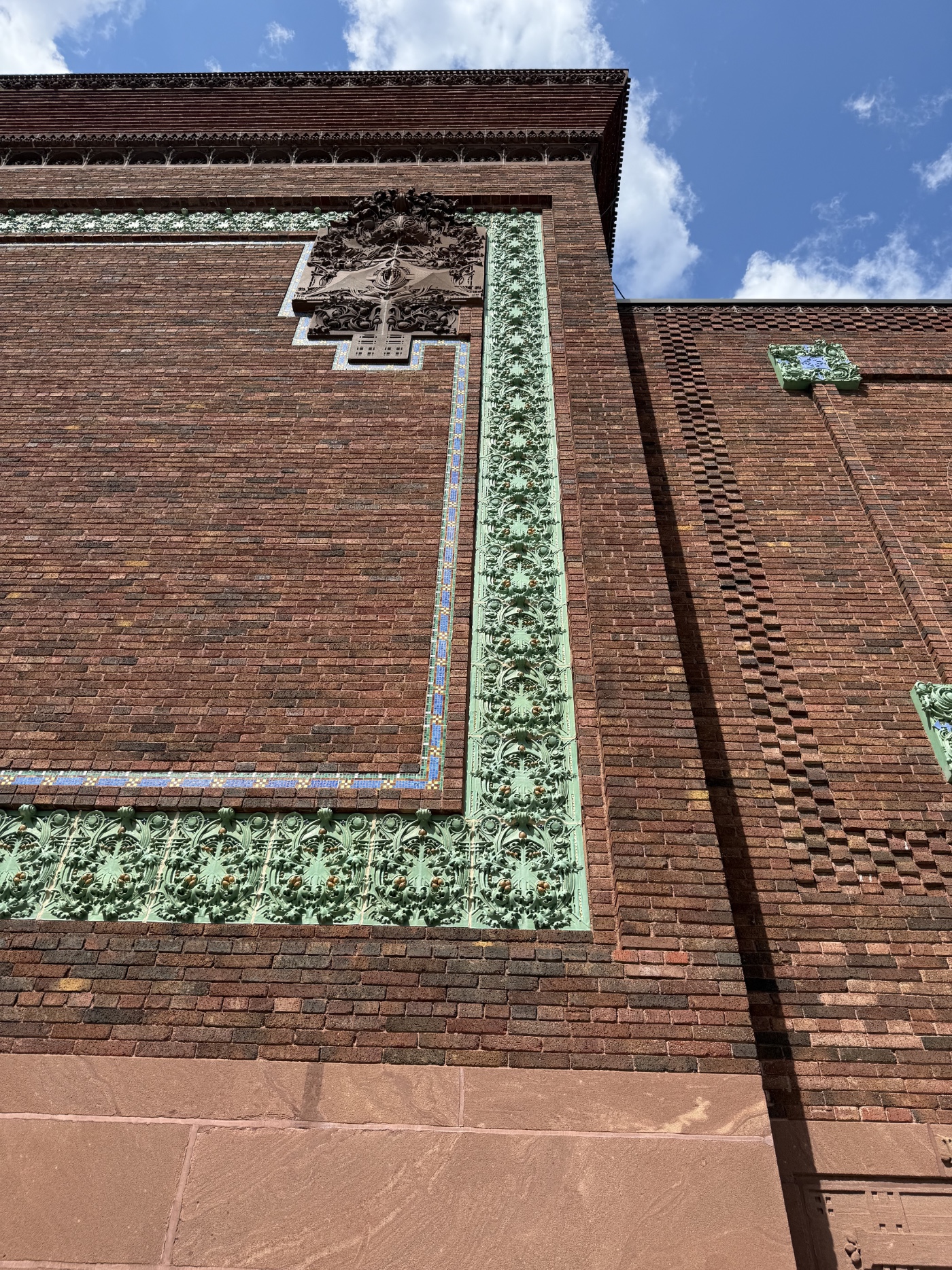
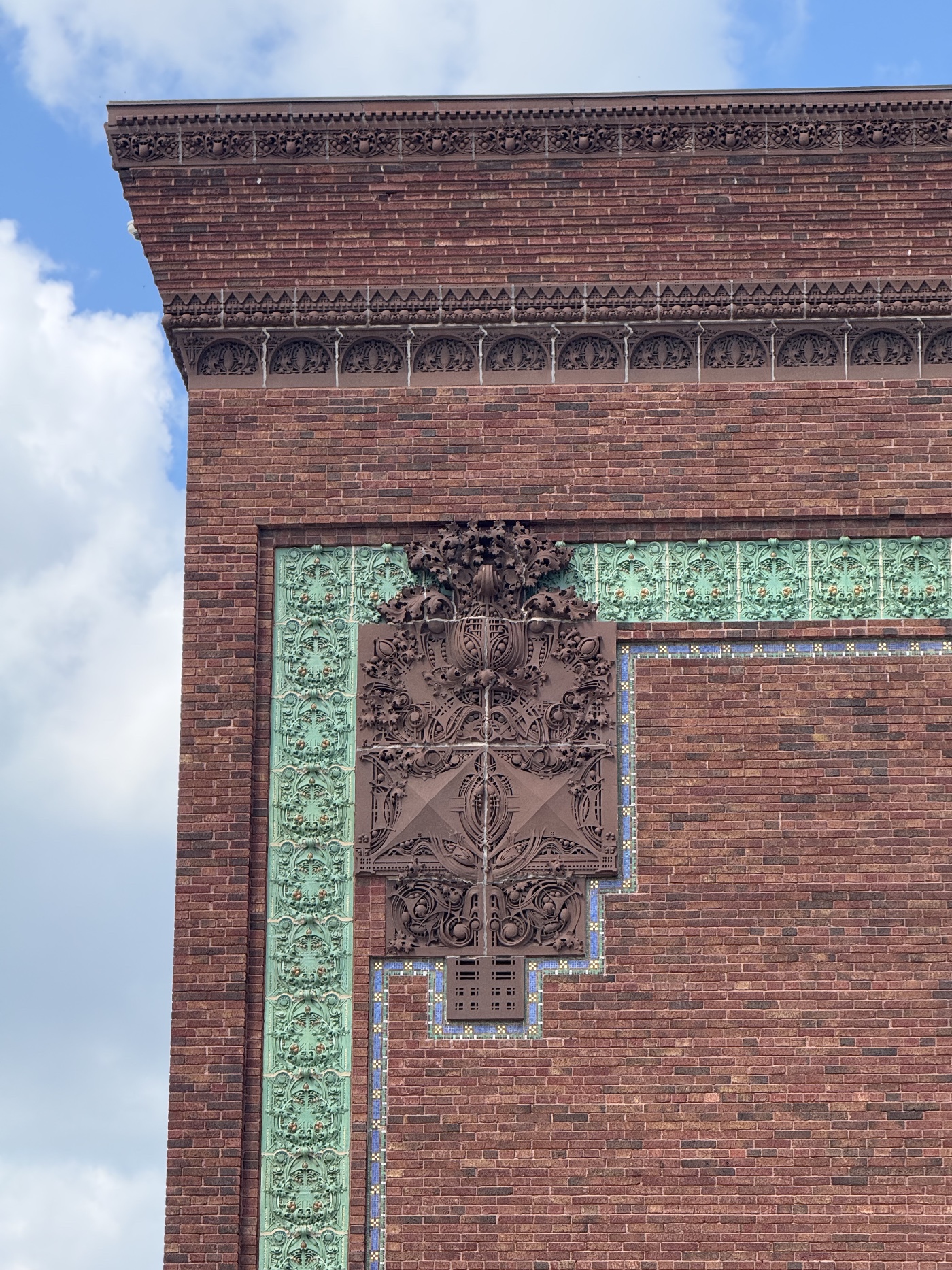
Inside, the large semicircles are repeated on the other sides of the building, but these are filled with murals instead of windows.
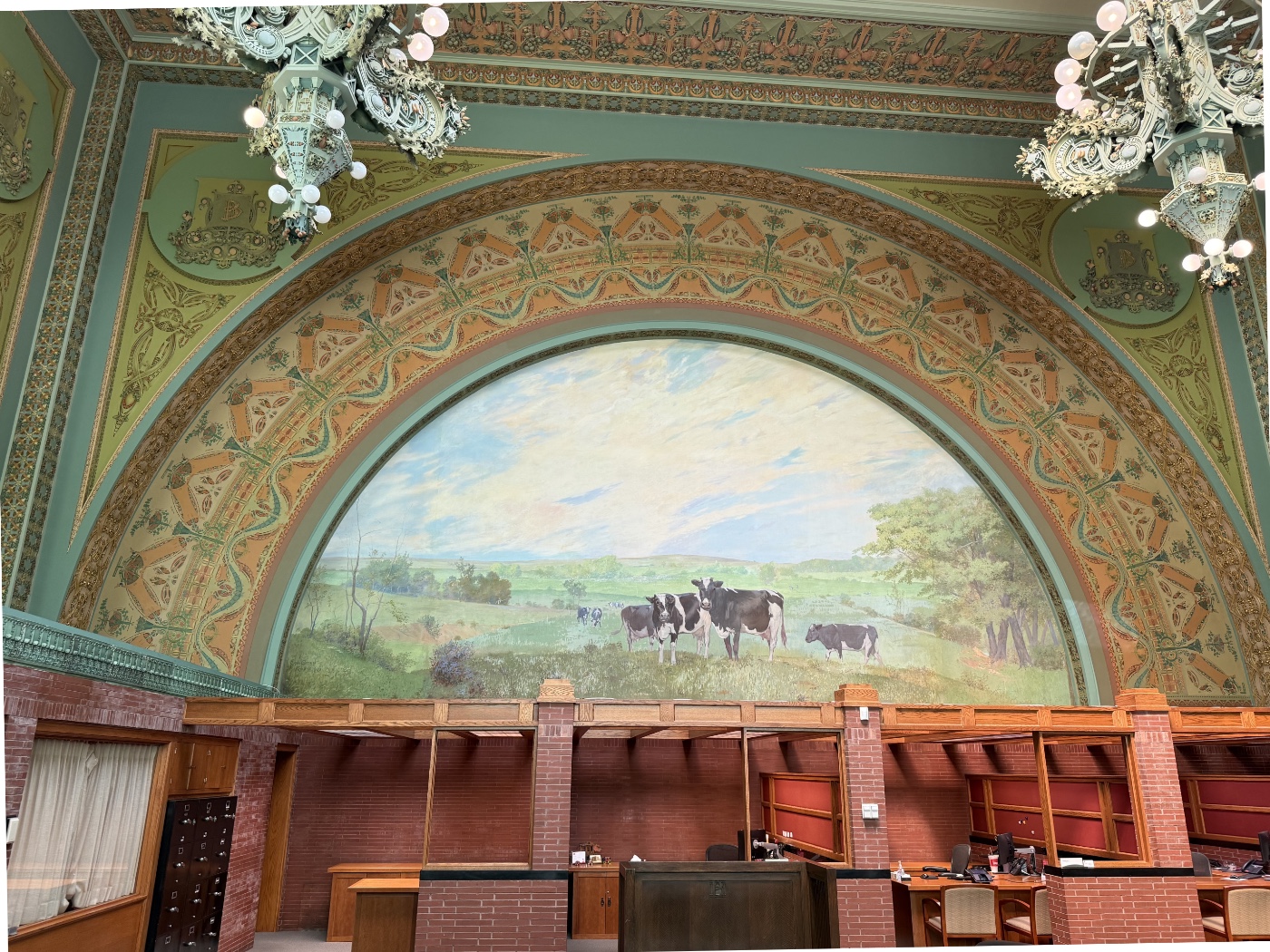
You can see part of the other mural behind the clock that faces you as you walk in the front door. The clock is above the teller area; there’s a mezzanine behind it.
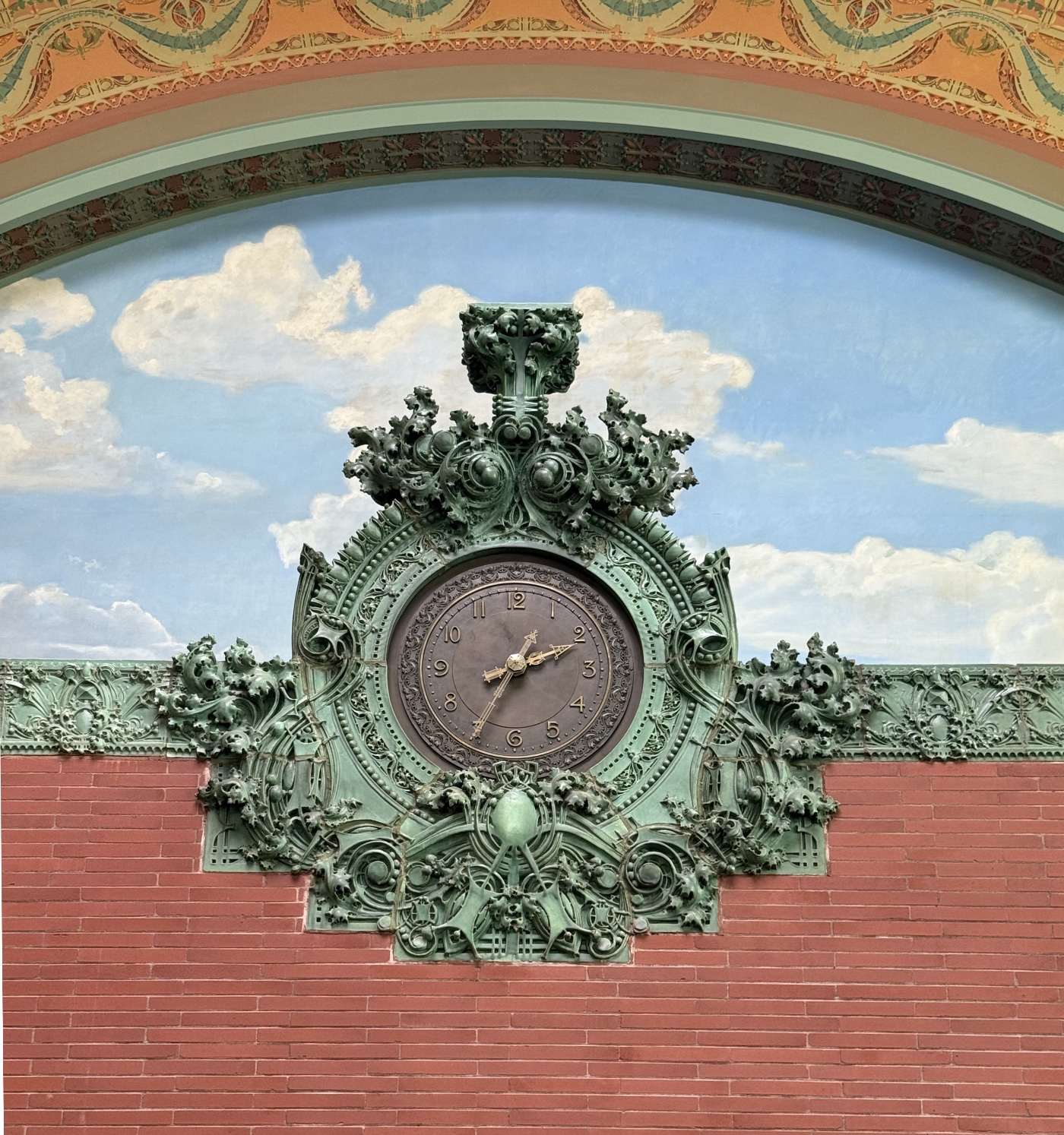
From the mezzanine is great view of the front stained glass window, the enormous hanging light fixtures, and the decorative piece above the entrance.
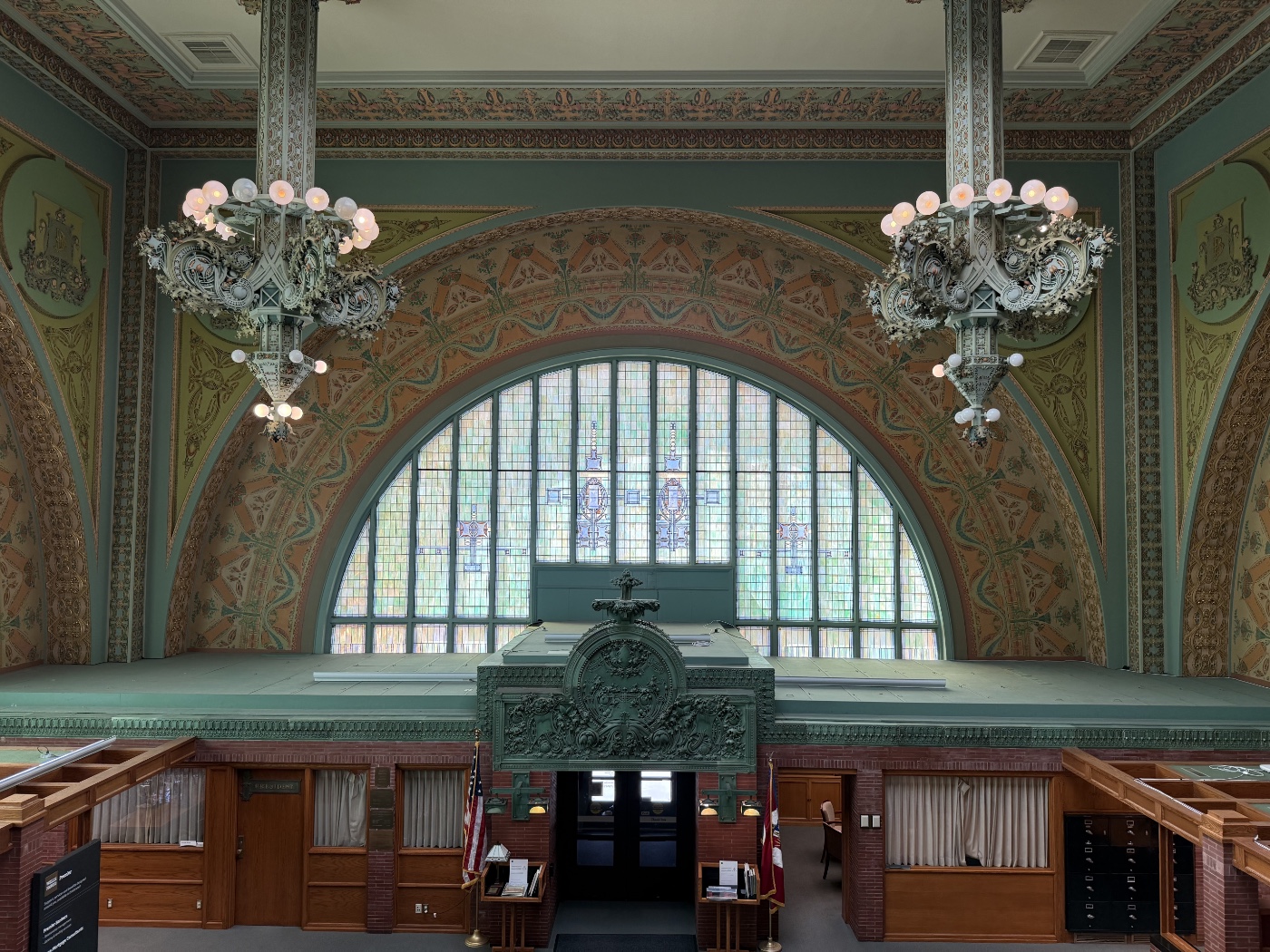
A “B” motif can be found in many of the decorative elements. They’re a nod to the bank’s president, Carl Bennett, who commissioned Sullivan at a time when he was having trouble getting work.
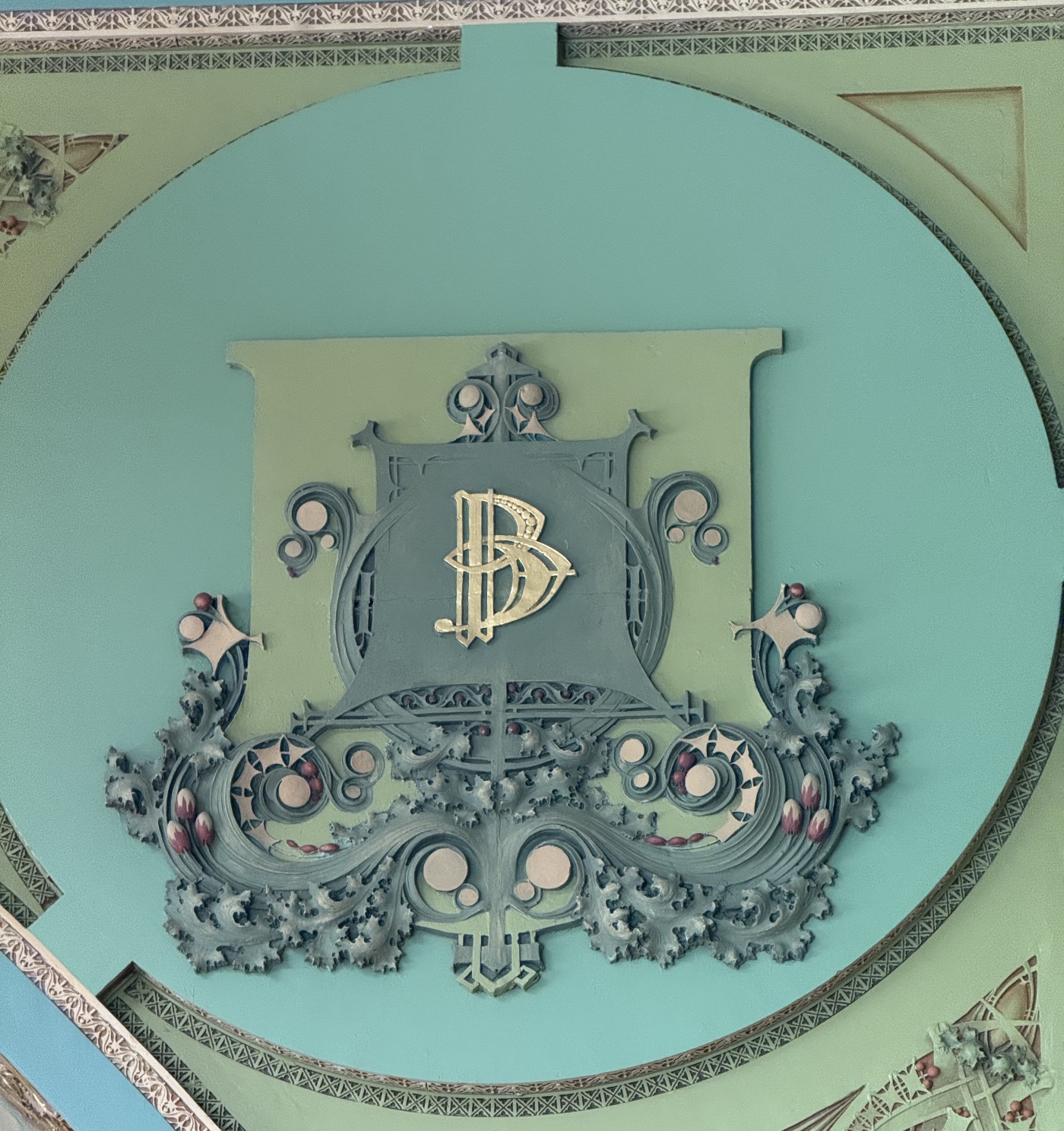
In an hallway above and behind the mezzanine, a few of Sullivan’s blueprints have been laminated and mounted on the walls.
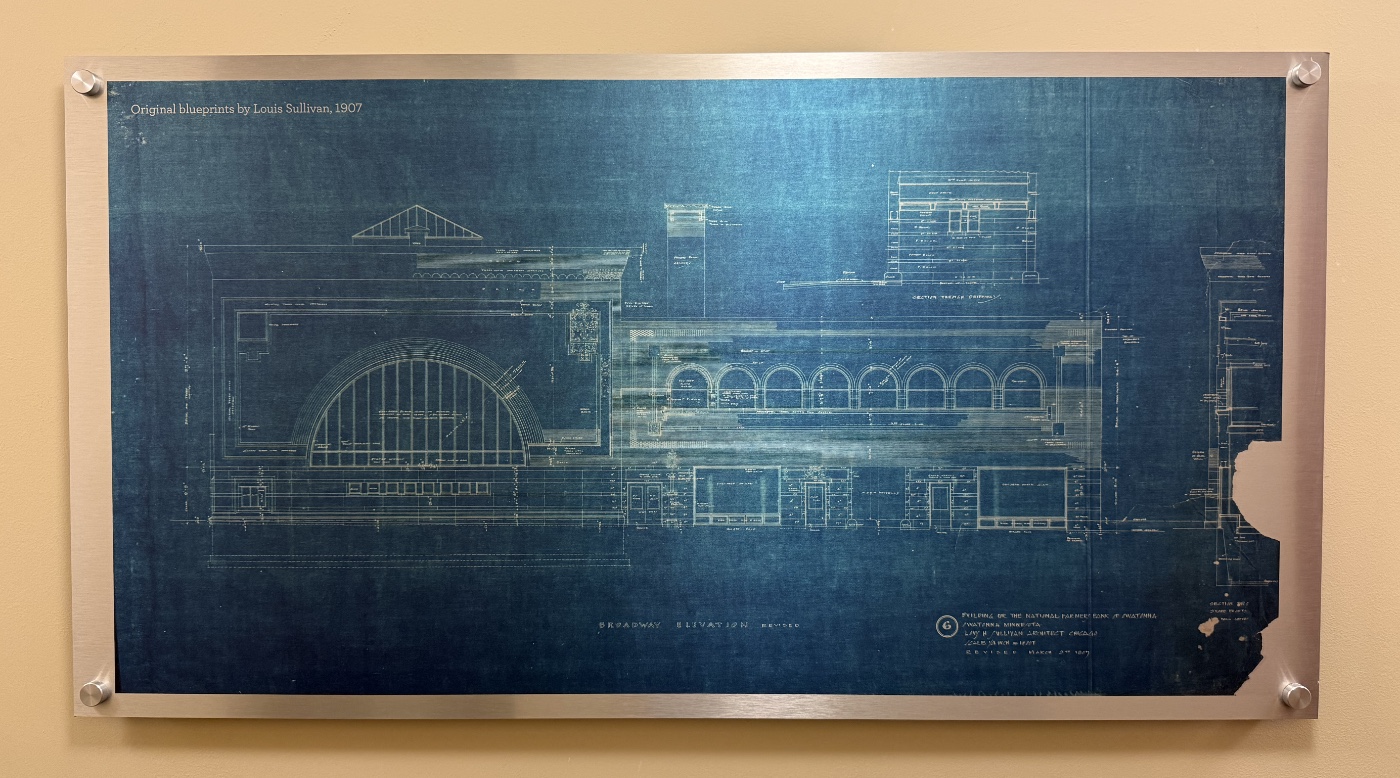
As before, I got a closeup of the title block.
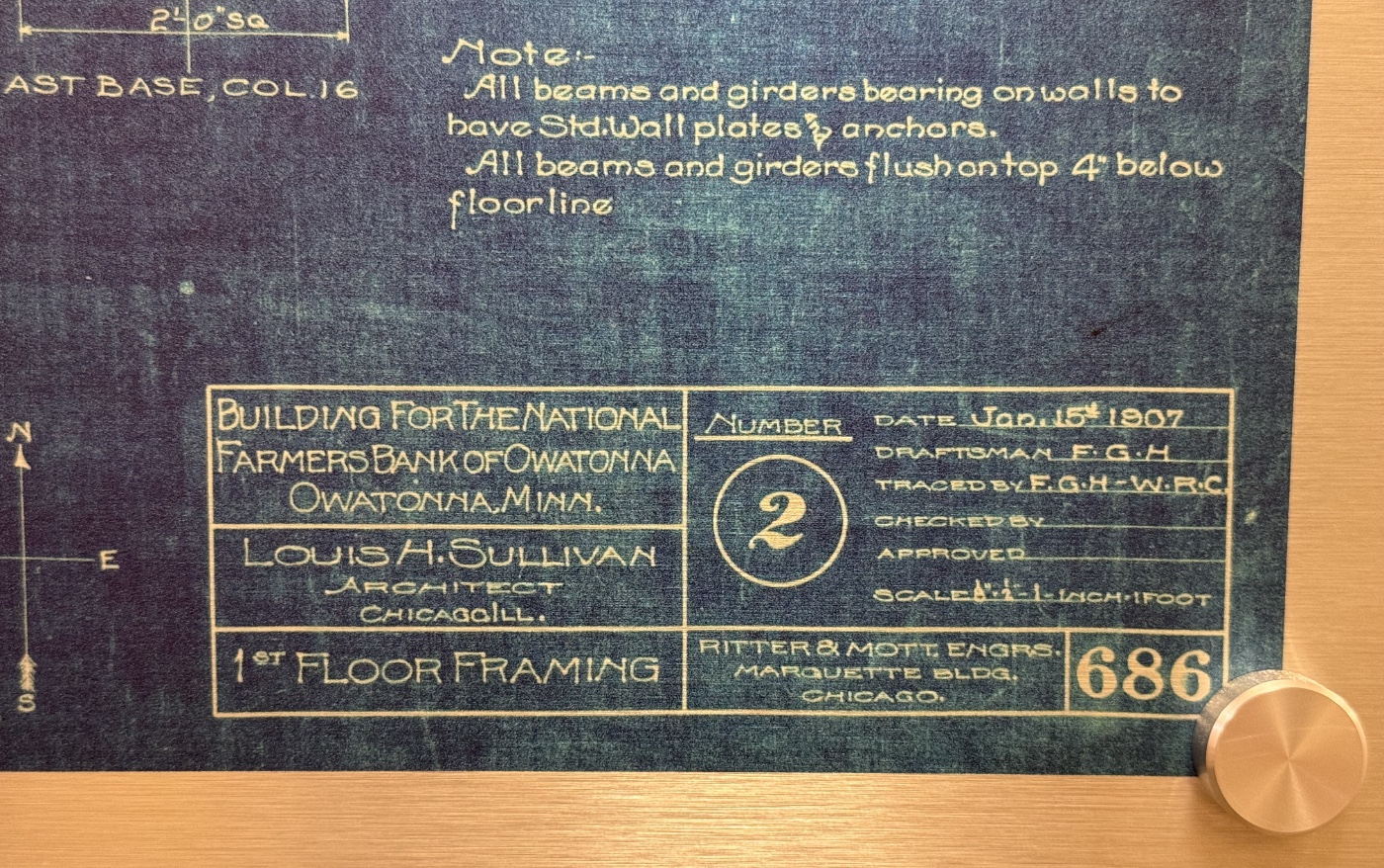
Also, there’s a wonderful detail of the floor slab. While reinforced concrete had been used well before this building, it still wasn’t especially common. What I like about this detail is that it isn’t very detailed. The theory of reinforced concrete was in its infancy, but Sullivan did seem to know that he needed top reinforcement in the negative moment areas.
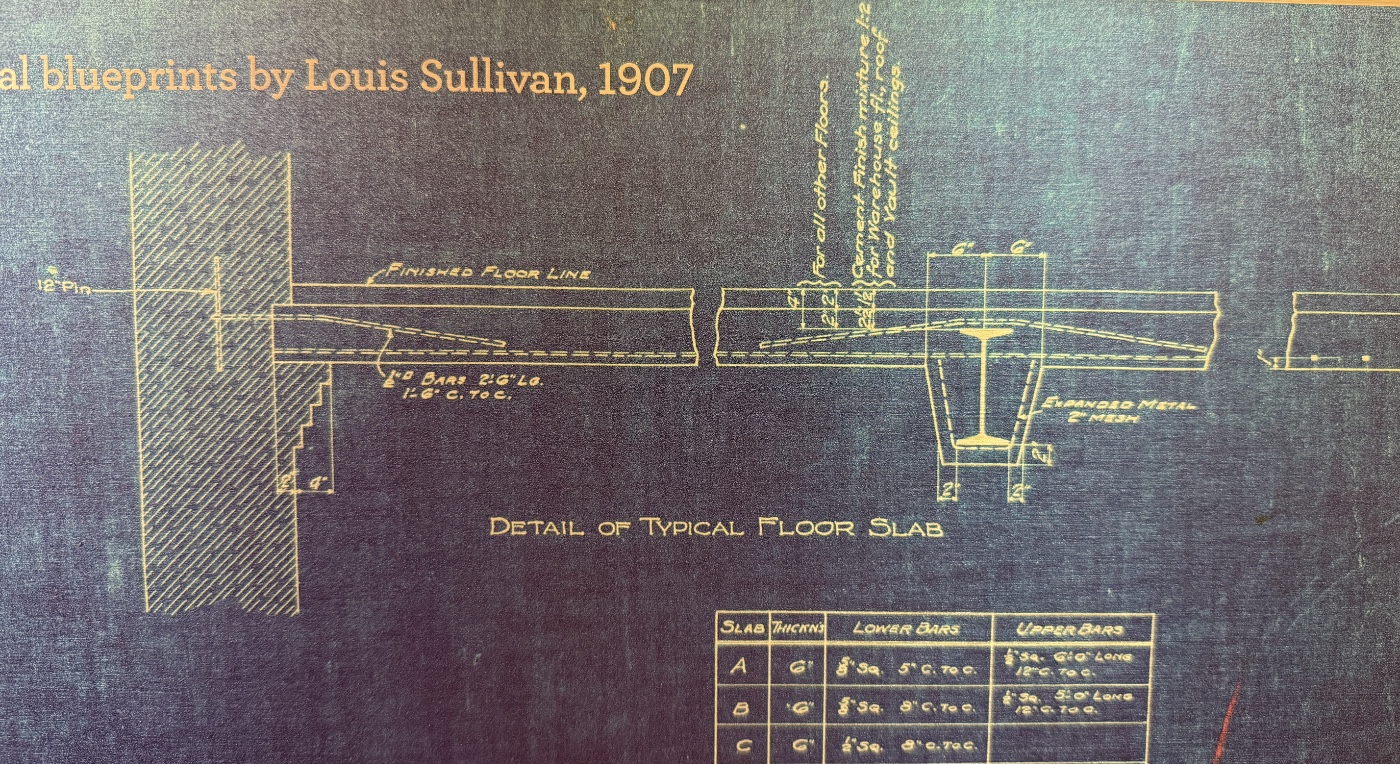
If things go according to plan, I’ll be visiting the three jewel box banks in Iowa next week.
-
There are several other semicircular windows on the longer side of the building, but they’re not made of stained glass. ↩
Wisconsin jewel box bank
August 27, 2025 at 10:34 PM by Dr. Drang
You may recall my post from earlier this summer about the Louis Sullivan jewel box banks and how ChatGPT gave me the wrong information about the best way to tour all of them. Today I started a trip that should hit five of the eight banks. Oh, I’m also doing some other stuff, like visiting my kids.
The first bank on the trip is the one that ChatGPT left off its list entirely, the Farmers and Merchants Union Bank in Columbus, Wisconsin. The bank has had some sections added to it since the original construction in 1919; only the front and one side façade are still visible in full.
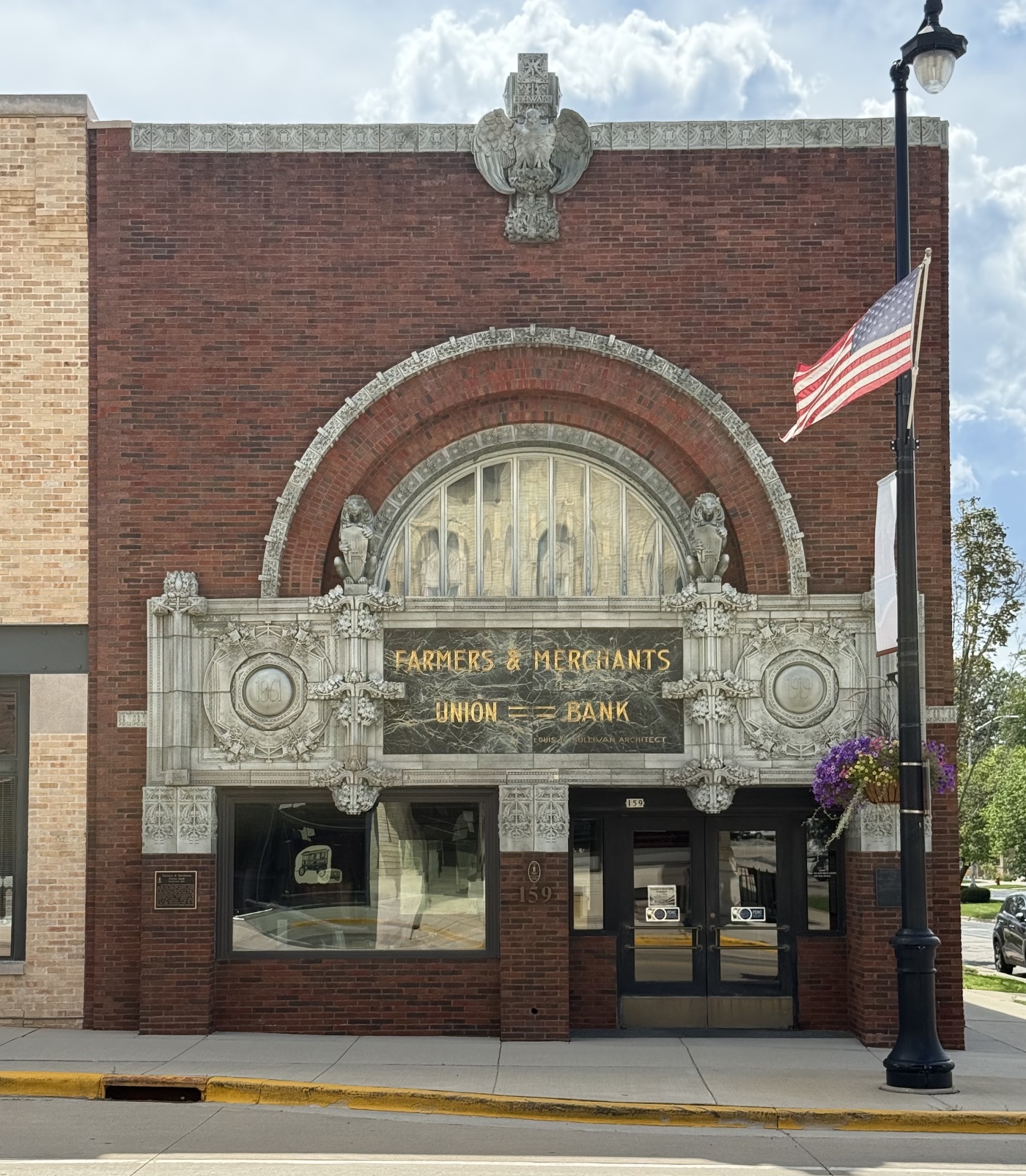
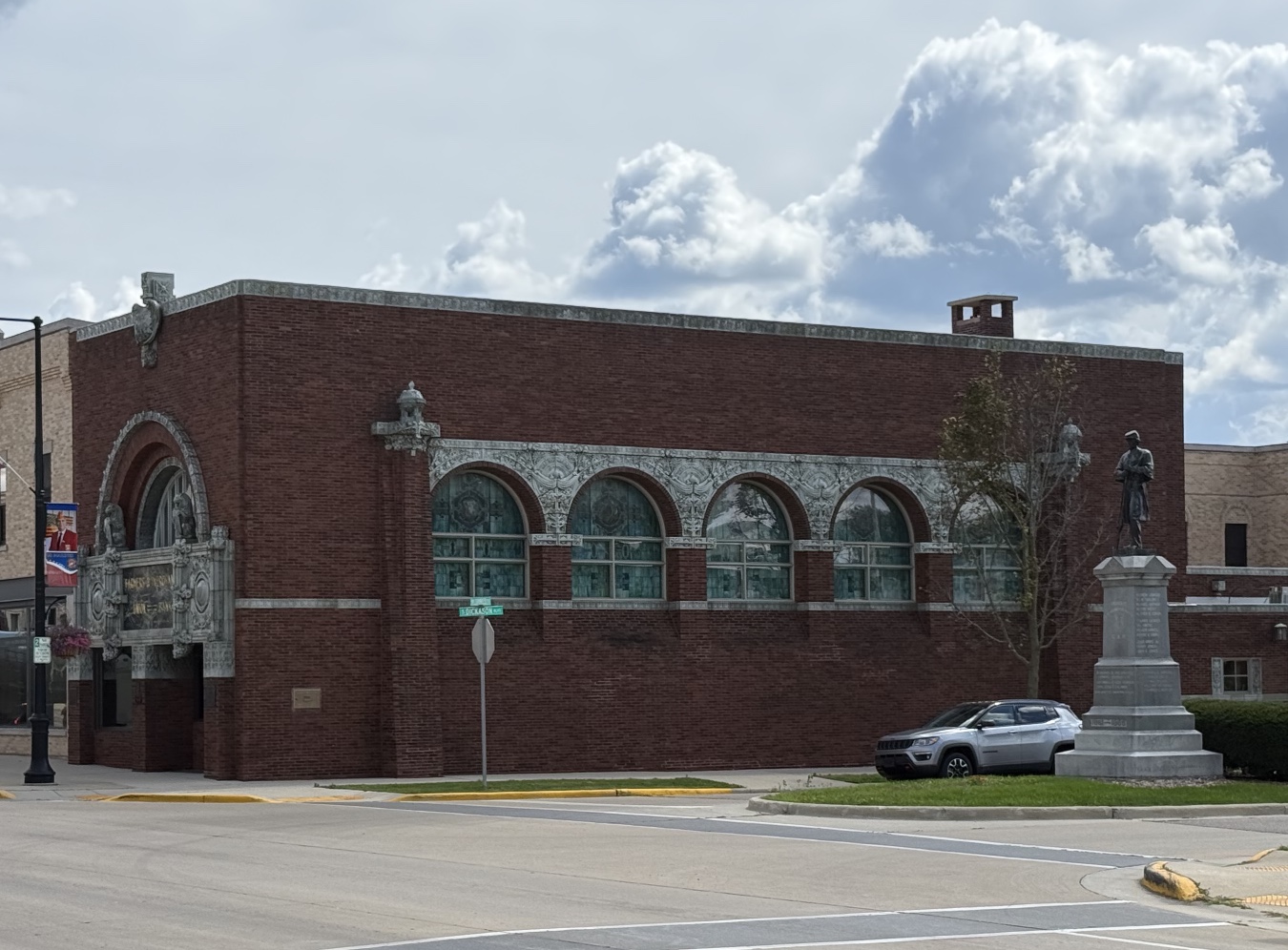
The semicircular stained glass windows are one of the building’s standout features, and they are especially beautiful from the inside. Here’s the front window,
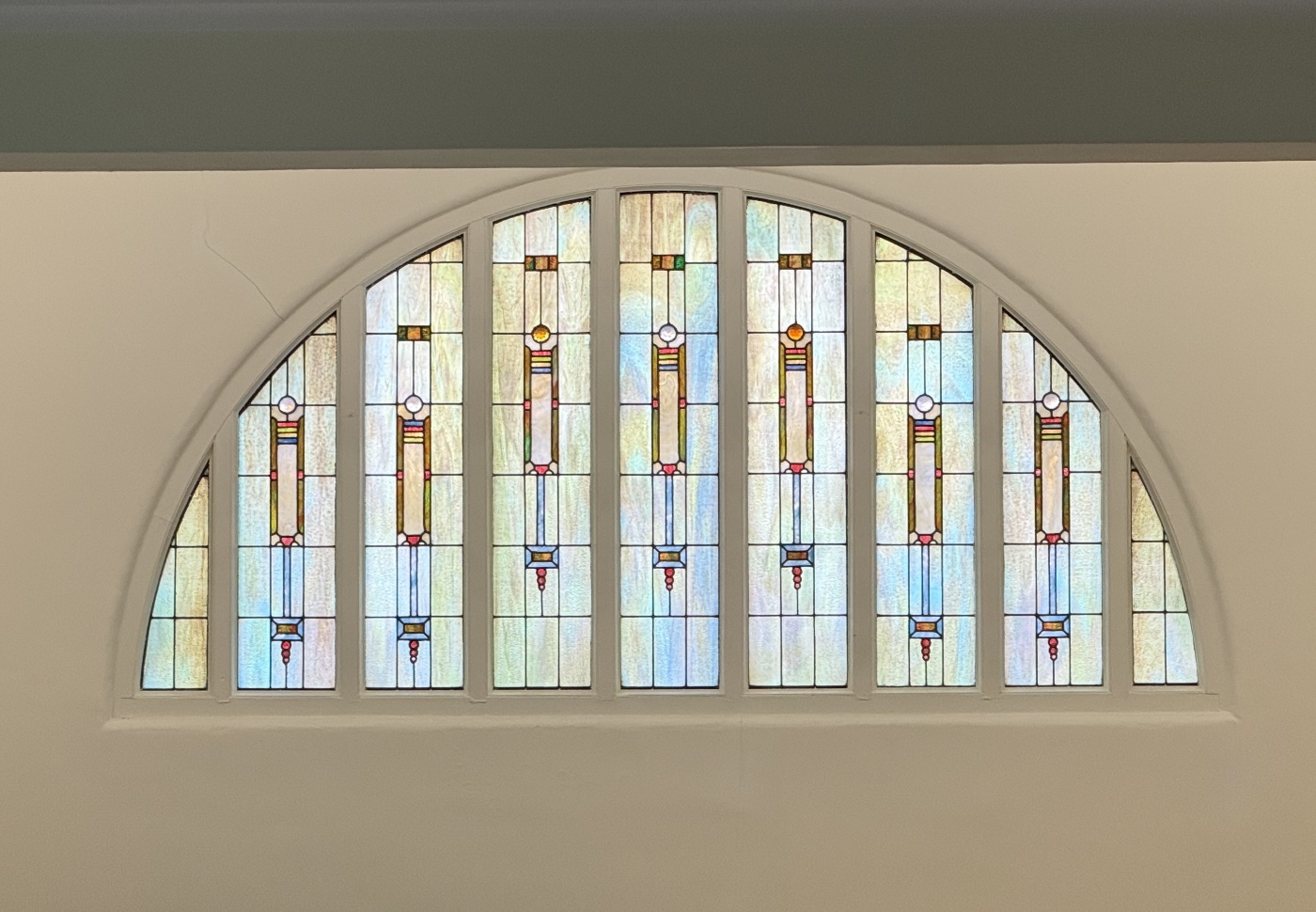
the rear window (which you can’t see from the exterior because of the additions),
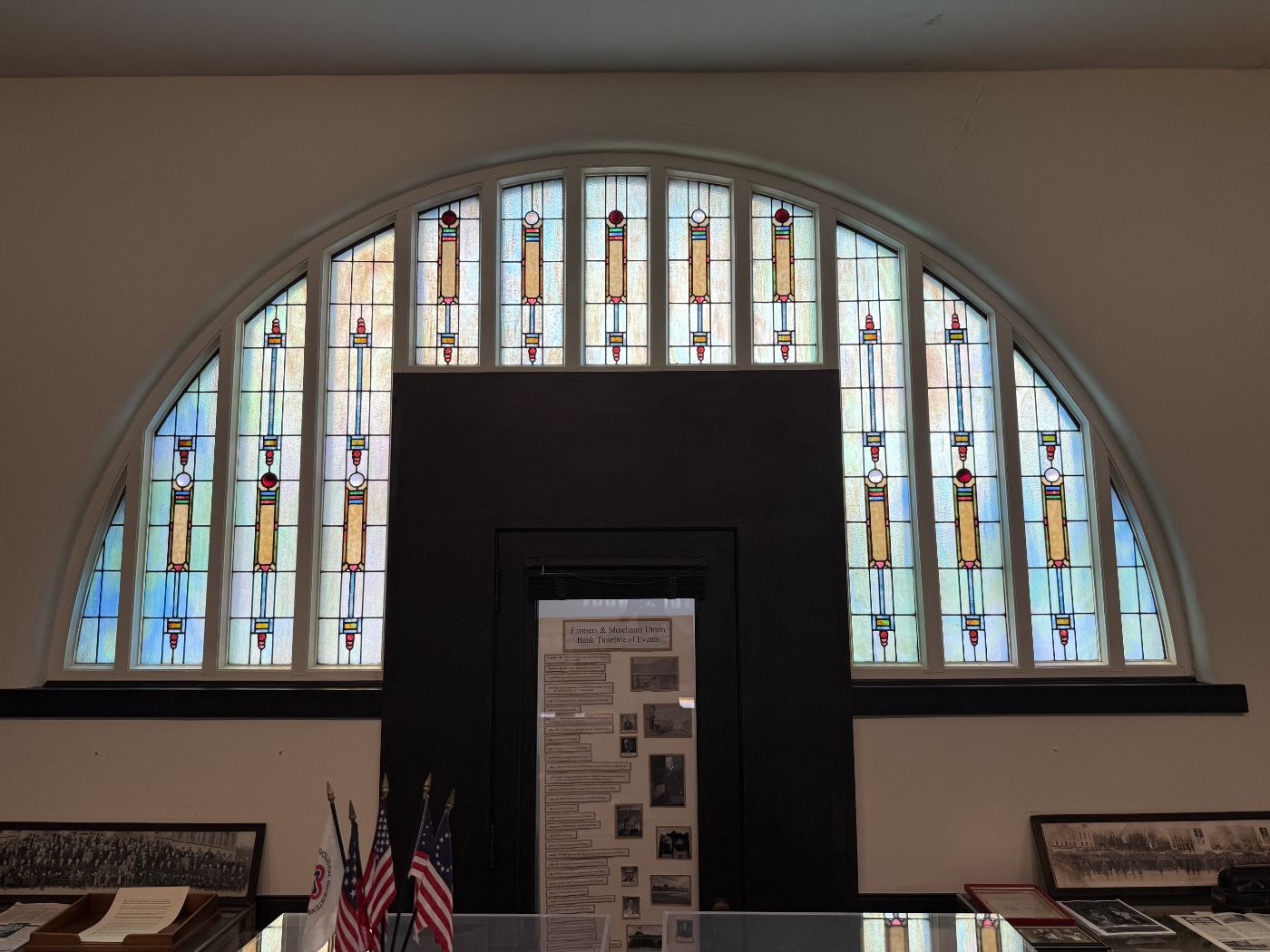
and the set of five side windows,
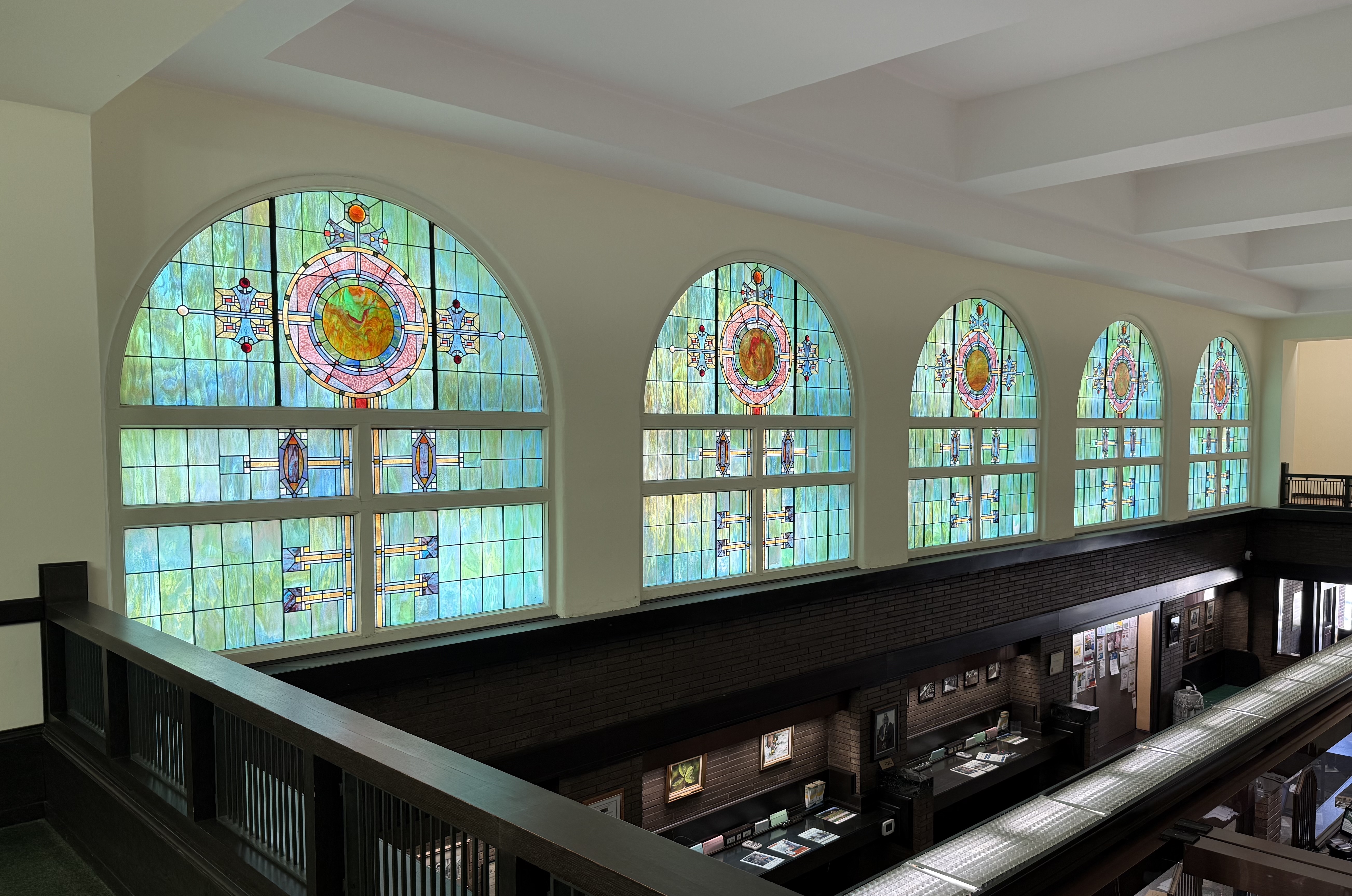
The rear window can be viewed up close because there’s a mezzanine next to it. Here’s a detailed view:
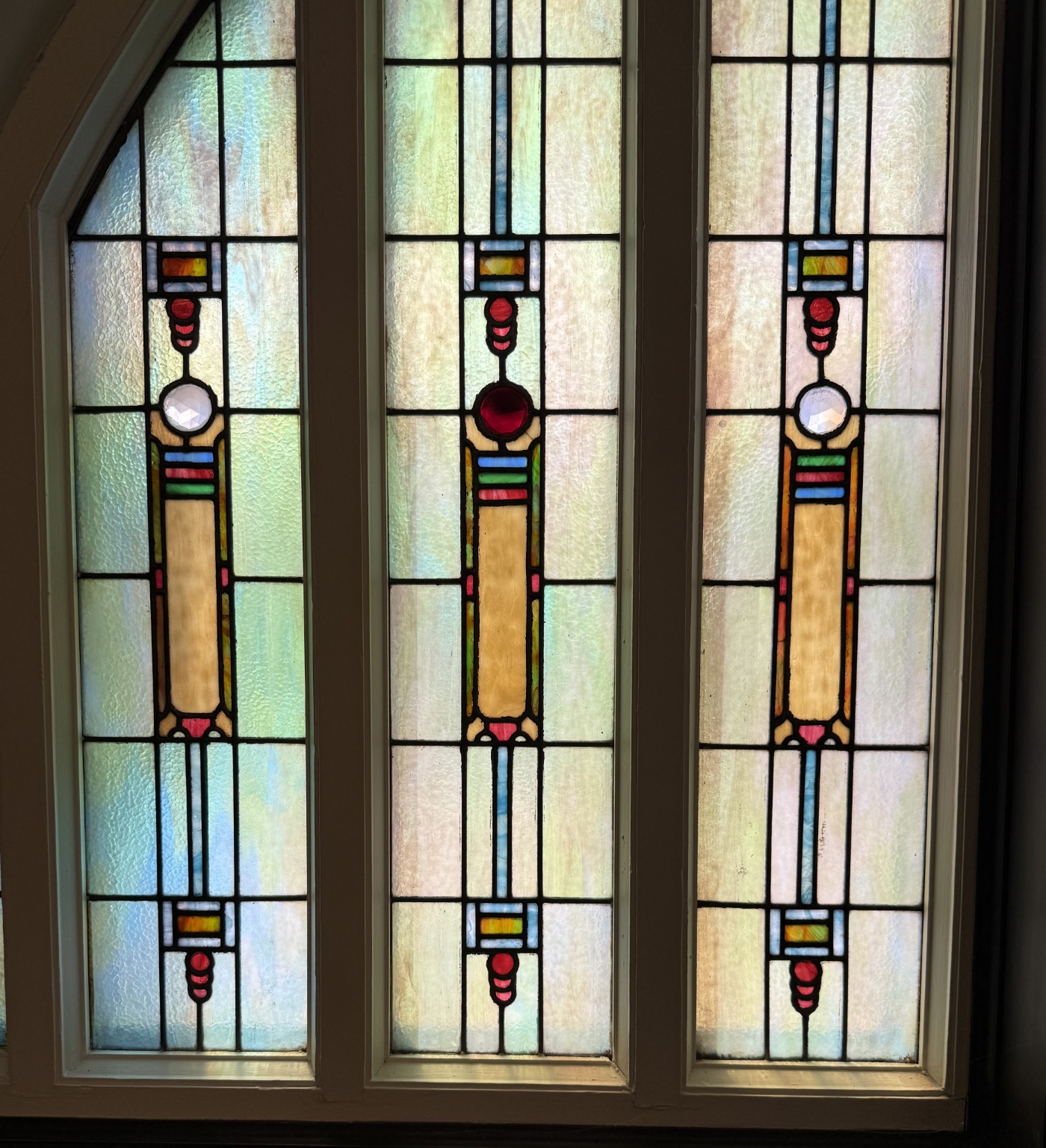
The bank has a little historical display on the mezzanine, and one of the tellers led me up to it so I could spend some time looking through its artifacts. There are examples of brick and terracotta from both the original 1919 construction and a major renovation in 1960.

The best thing on mezzanine, though, is a set of Sullivan’s blueprints for the bank. Here you can see the front and side elevations:
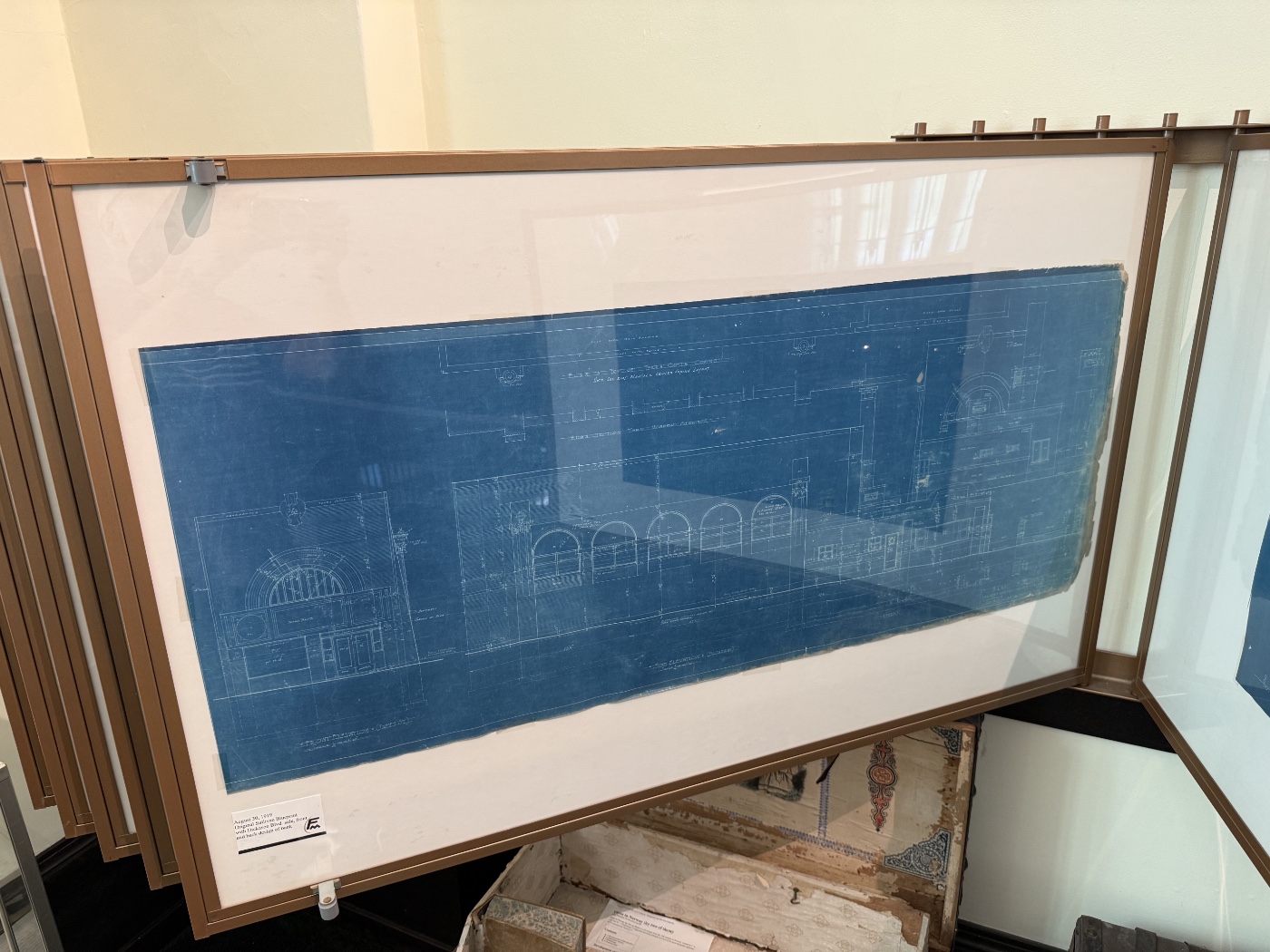
You can also see the source of my frustration in trying to photograph the blueprints—too much reflection off the glass that covers them. They’re easier to see in person. I did manage to get a halfway decent shot of Sullivan’s title block.
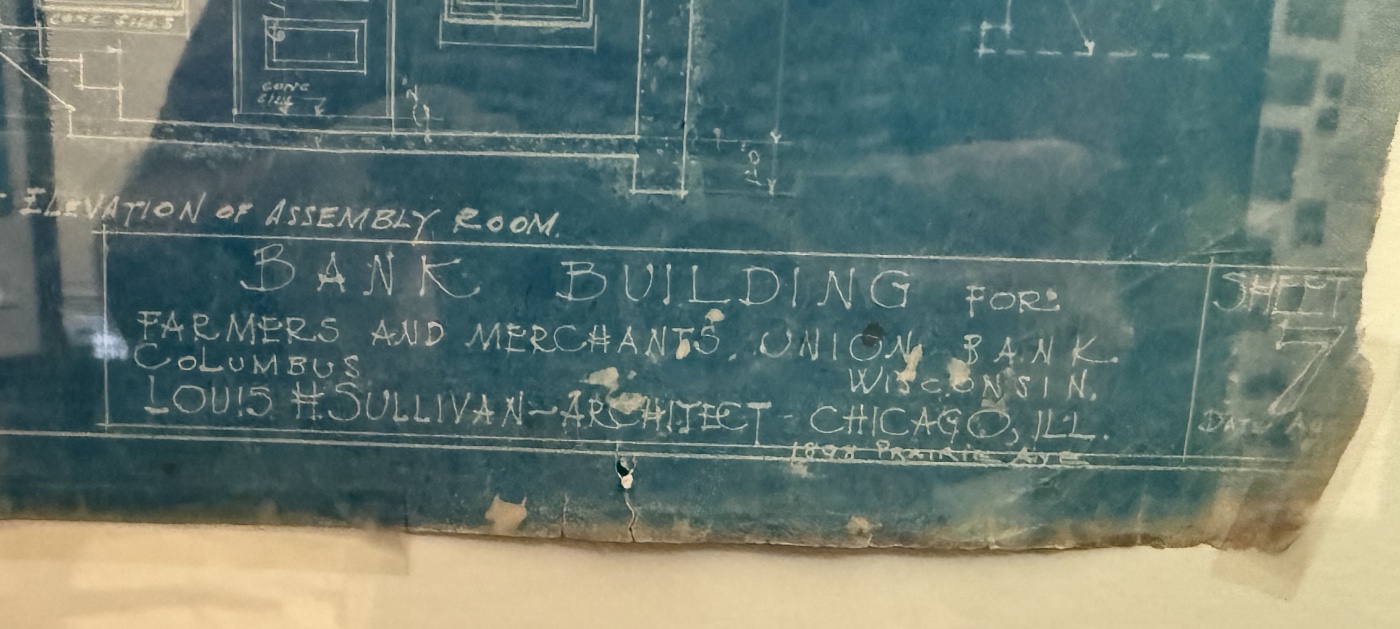
Here’s a nice view of several terracotta blocks in situ,
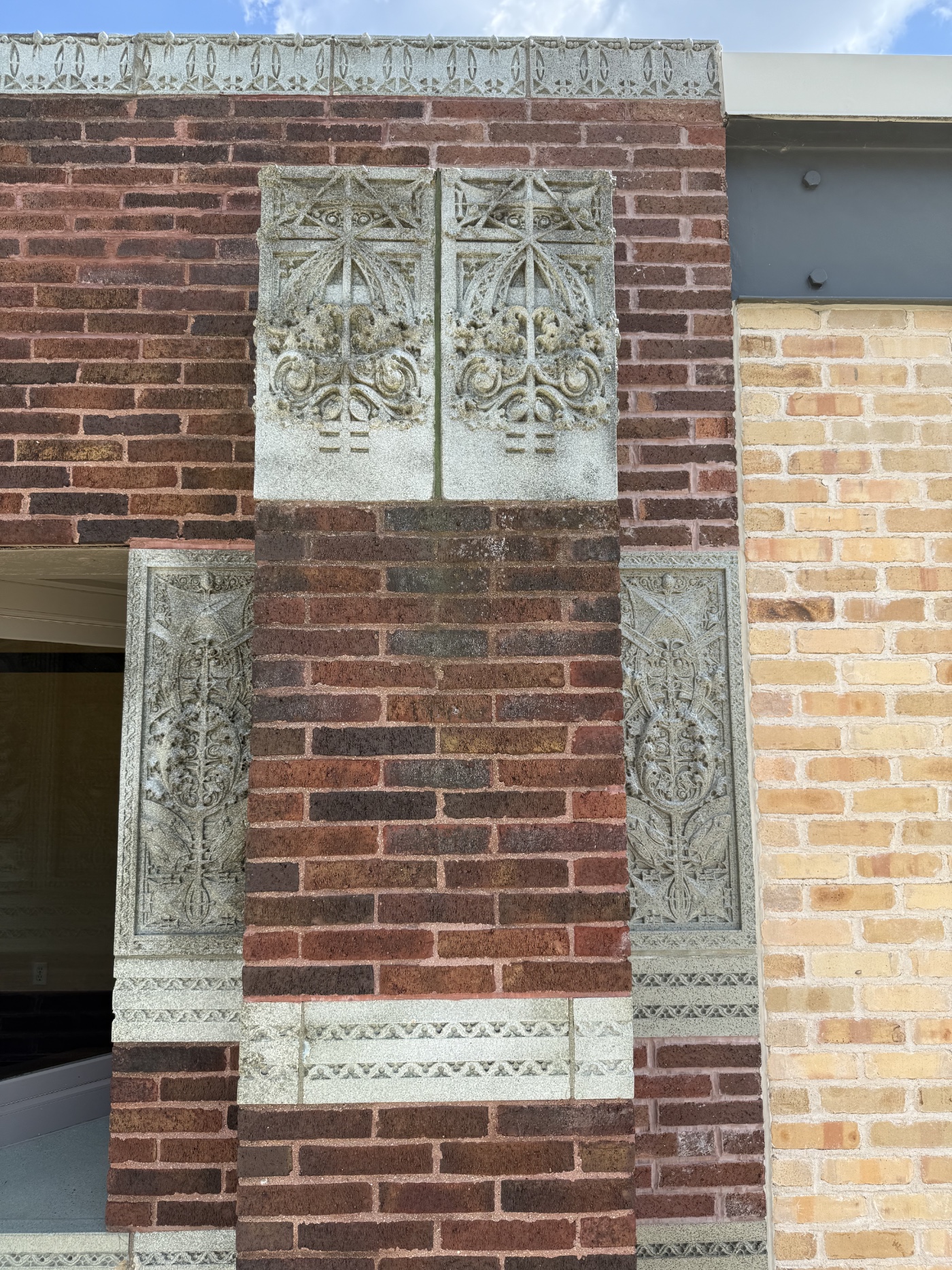
and an imposing eagle at the top of the rear façade,

The eagle is just visible over the top of the side wall.
I mentioned additions to the bank. The one in 1960 restored some of the damaged terracotta, which was nice. Not quite so nice was the extension off the back of the bank:
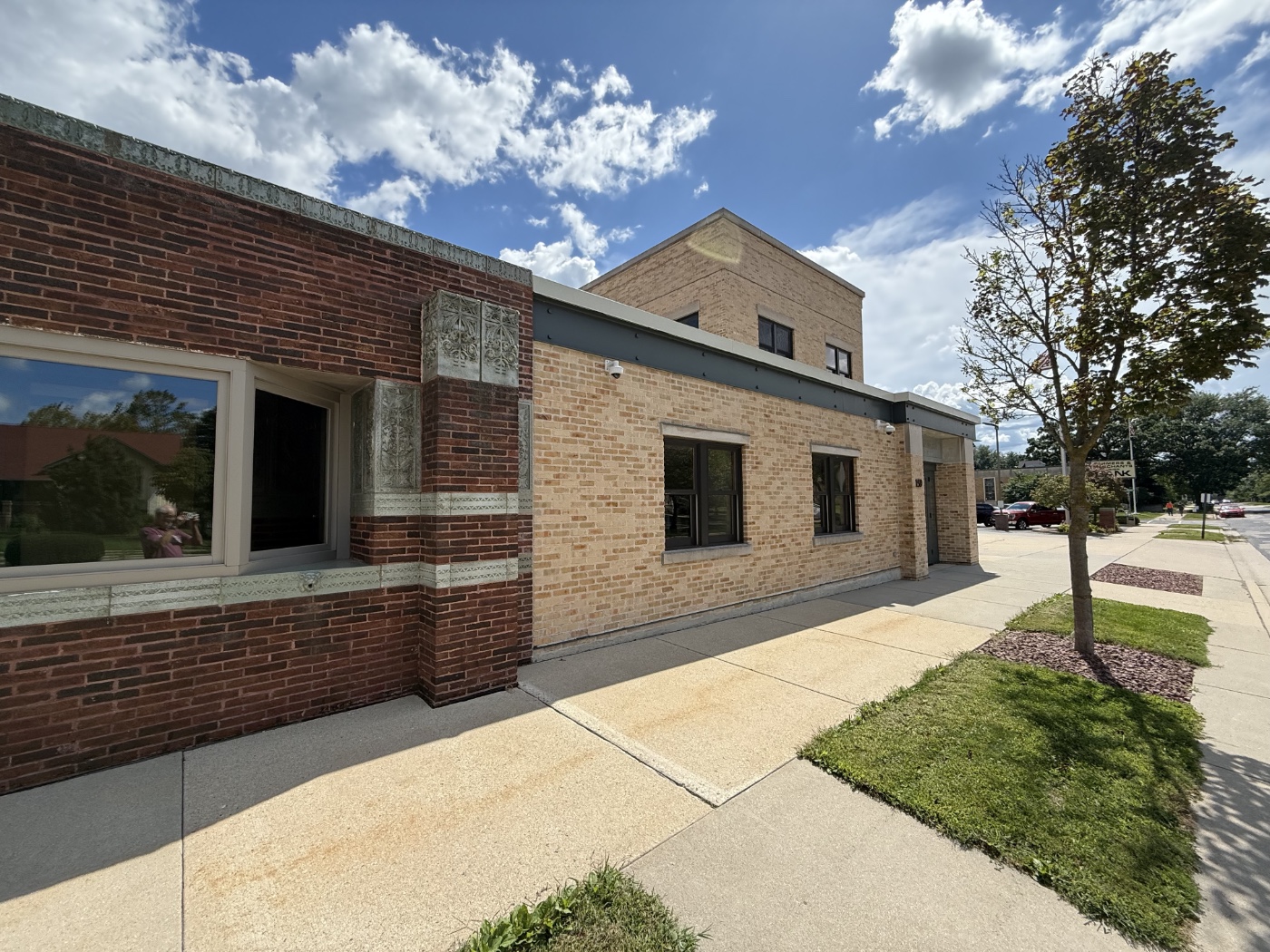
I guess you could be charitable and say the 1960 architect wanted to make sure you didn’t confuse his work with Sullivan’s.
Finally, here’s the plaque on the front façade commemorating the building’s designation as a national historic landmark:
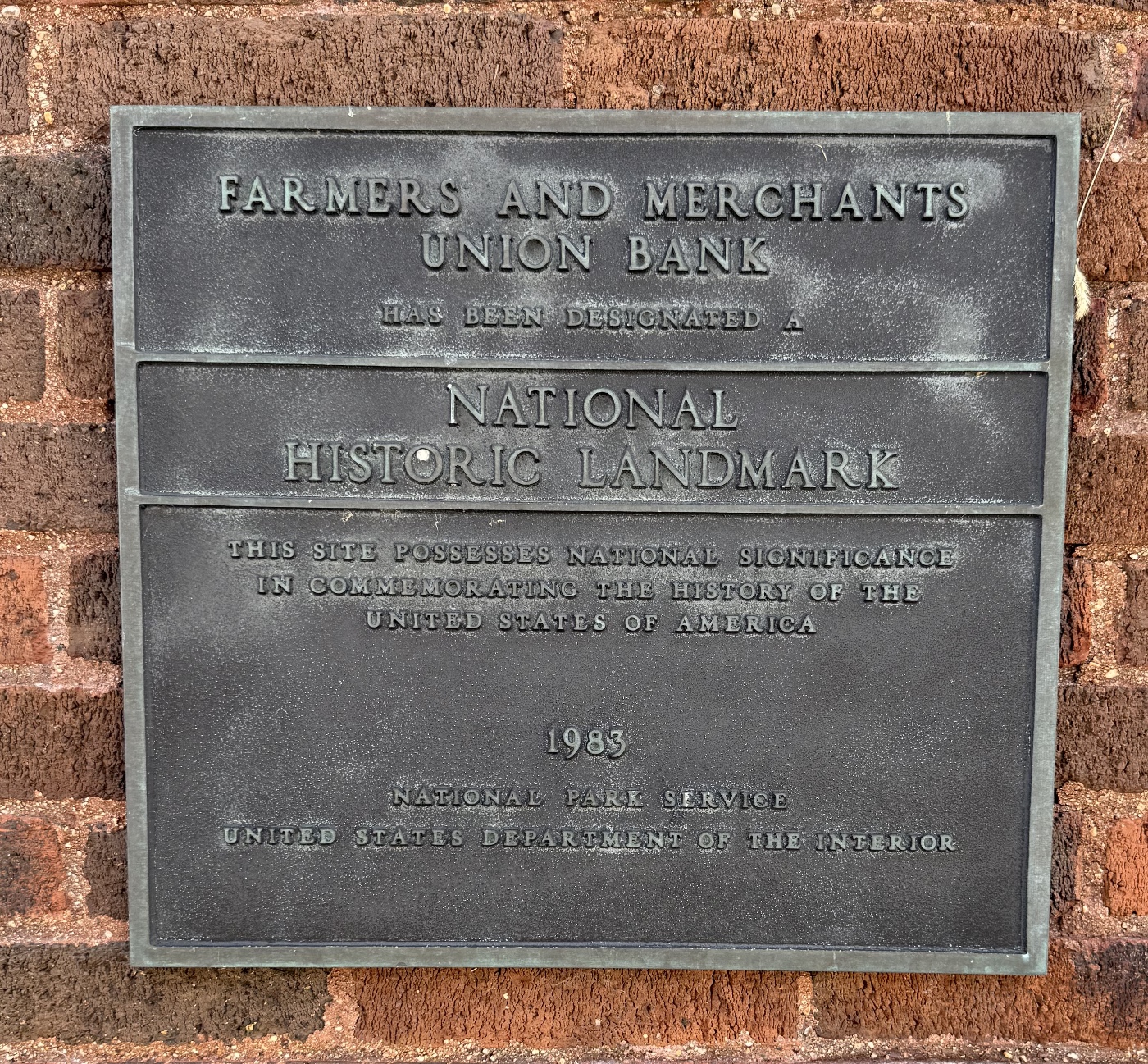
Although this is the first jewel box bank on my tour, it’s the last one Sullivan designed. He went out with a bang.
Library database success story
August 22, 2025 at 10:34 PM by Dr. Drang
As I said back in June, one of my goals for my library search system (recently updated) was to be able to check on whether I already owned a book while in a used bookstore. I got to use it for that very purpose a couple of days ago, and it worked just as I hoped.
I saw a copy of Cornelius Lanczos’s The Variational Principles of Mechanics at a local used book store. In good shape and at a good price. This is a book I’ve known about for 40 years and one that’s very well known. It’s not the book that was assigned for the class I took on energy methods—that was Henry Langhaar’s Energy Methods in Applied Mechanics, a wonderful book that I’ve referred to throughout my career—but it was one that I’ve always thought I should own.
The problem was, as I stood there in the bookstore, that I couldn’t remember whether I’d ever followed through on that thought. Out came my phone. I brought up the search page, authenticated myself, and searched for “Lanczos.” Zero results. On the off-chance his name included some diacritical marks that weren’t on the book itself, I also searched for “Variational.” Still no hits, so I bought the book and added it to the system. Now it’s on my shelf and a search on his name returns this:
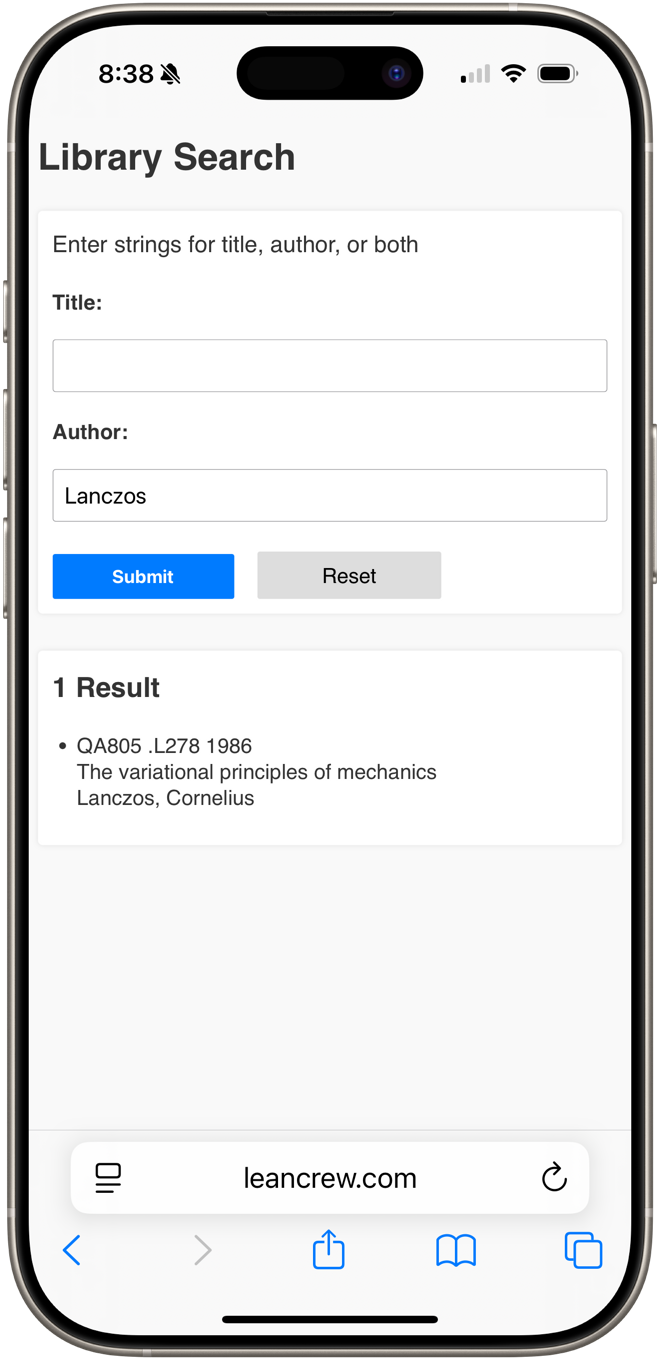
Would it have been a tragedy if I spent ten dollars on a second copy of a book I already owned? No. Did I spend more than ten dollars worth of effort building my library search system? Absolutely. But the satisfaction I got having the system work exactly as I’d hoped was priceless.
